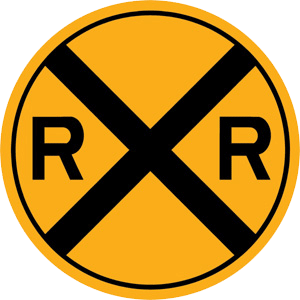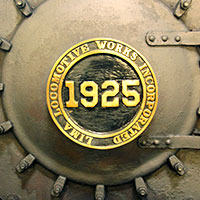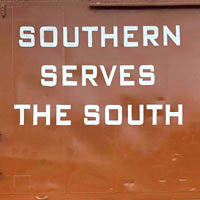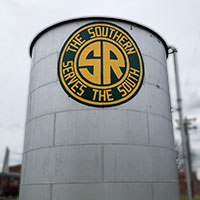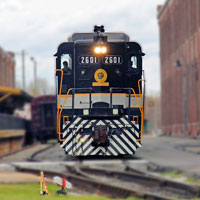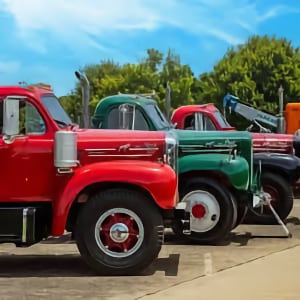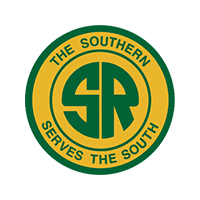
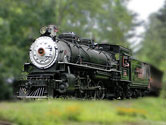






Museum


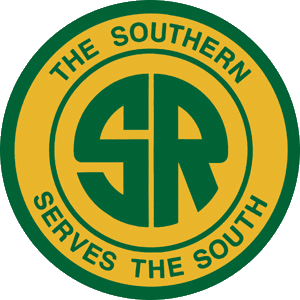 |
North Carolina
|
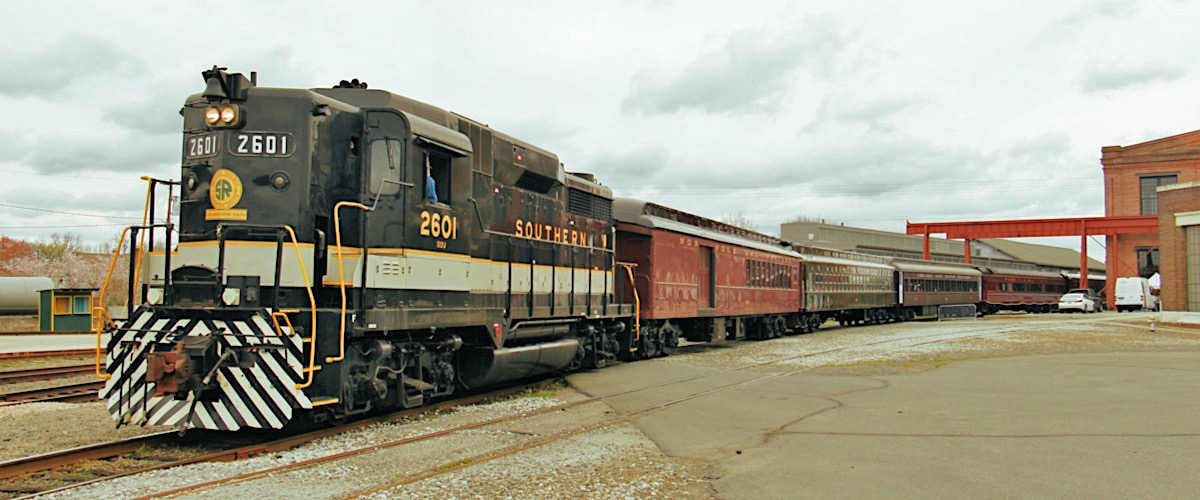
Spencer, NC / Mar 2018 / RWH


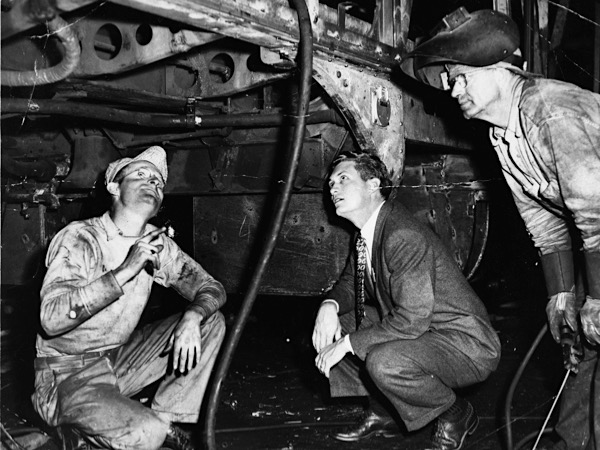 alk about unsung heroes. That's the real story of Spencer Shops — the people working at a big-time railroad repair center but virtually unknown outside the railroad industry. Ballads were written about brave engineers. Books were penned about fast freights and sleek passenger trains. But little thought was given to the army of workers who made it all possible. For every thundering freight train wheeling textiles, tobacco, and furniture out of North Carolina, hundreds labored in the cavernous Spencer back shop. For every one of the 22 daily passenger trains rolling along the Southern Railway main line between Washington and Atlanta, scores of men (and sometimes women) toiled in the smoky, noisy roundhouse or any one of the buildings scattered around the Spencer Shops. The behind-the-scenes players have gained little notice. For that reason, it is appropriate that Spencer Shops is listed on the National Register of Historic Places and is home to the North Carolina Transportation Museum.
alk about unsung heroes. That's the real story of Spencer Shops — the people working at a big-time railroad repair center but virtually unknown outside the railroad industry. Ballads were written about brave engineers. Books were penned about fast freights and sleek passenger trains. But little thought was given to the army of workers who made it all possible. For every thundering freight train wheeling textiles, tobacco, and furniture out of North Carolina, hundreds labored in the cavernous Spencer back shop. For every one of the 22 daily passenger trains rolling along the Southern Railway main line between Washington and Atlanta, scores of men (and sometimes women) toiled in the smoky, noisy roundhouse or any one of the buildings scattered around the Spencer Shops. The behind-the-scenes players have gained little notice. For that reason, it is appropriate that Spencer Shops is listed on the National Register of Historic Places and is home to the North Carolina Transportation Museum.
Duane Galloway and Jim Wrinn / Southern Railway's Spencer Shops 1896-1996
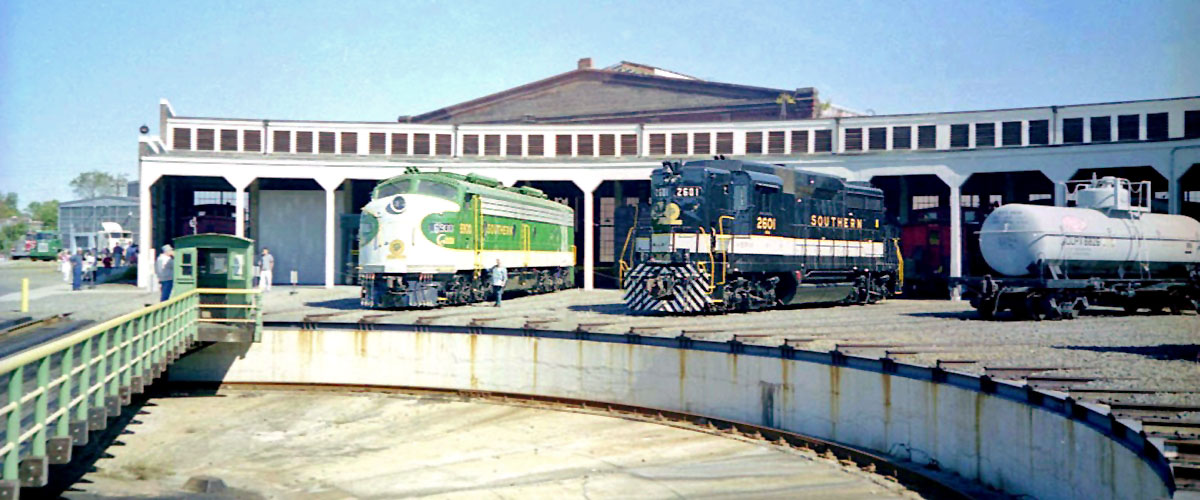
Spencer, NC / Oct 2000 / JCH

 he North Carolina Transportation Museum was founded in 1977, when the Southern Railway deeded to the state of North Carolina the property once occupied by the railroad's largest locomotive maintenance and repair shop from the steam era: Spencer Shops. Both the facility and the adjacent town of Spencer were named for Samuel Spencer, the first president of the Southern after its formation in 1894. The shops were opened soon thereafter in 1896, providing the new system with a newer and larger locomotive facility between Washington and Atlanta — its heaviest mainline. Original buildings included a machine shop, storehouse building, office building, wood working shop, boiler shop, a power plant, and a large 37-bay roundhouse and accompanying turntable. Although Spencer Shops survived into the diesel-electric era, the facility was phased out in the 1970s and abandoned.
he North Carolina Transportation Museum was founded in 1977, when the Southern Railway deeded to the state of North Carolina the property once occupied by the railroad's largest locomotive maintenance and repair shop from the steam era: Spencer Shops. Both the facility and the adjacent town of Spencer were named for Samuel Spencer, the first president of the Southern after its formation in 1894. The shops were opened soon thereafter in 1896, providing the new system with a newer and larger locomotive facility between Washington and Atlanta — its heaviest mainline. Original buildings included a machine shop, storehouse building, office building, wood working shop, boiler shop, a power plant, and a large 37-bay roundhouse and accompanying turntable. Although Spencer Shops survived into the diesel-electric era, the facility was phased out in the 1970s and abandoned.
The museum was first known as Spencer Shops, but later the name was changed to the North Carolina Transportation Museum to widen the scope of the collection and exhibits to include airplanes and automobiles with ties to the Carolina region. Today, a relocated depot serves as a visitor center for the museum, while the renovated roundhouse and massive back shop building house the indoor collections and displays. Several stalls in the roundhouse are reserved for locomotive overhaul and rolling stock restoration. The railroad collection includes many steam, diesel, and rolling stock examples, as well as a handful of streetcars, electrics, and private gilded passenger cars. The museum operates passenger trains that traverse the length of the grounds throughout the day over an out-and-back route. Numerous special events occur annually, and the museum often hosts visiting motive power (such as Norfolk & Western #611) and other historic equipment.

Click to see the Transportation Museum plotted on a Google Maps page
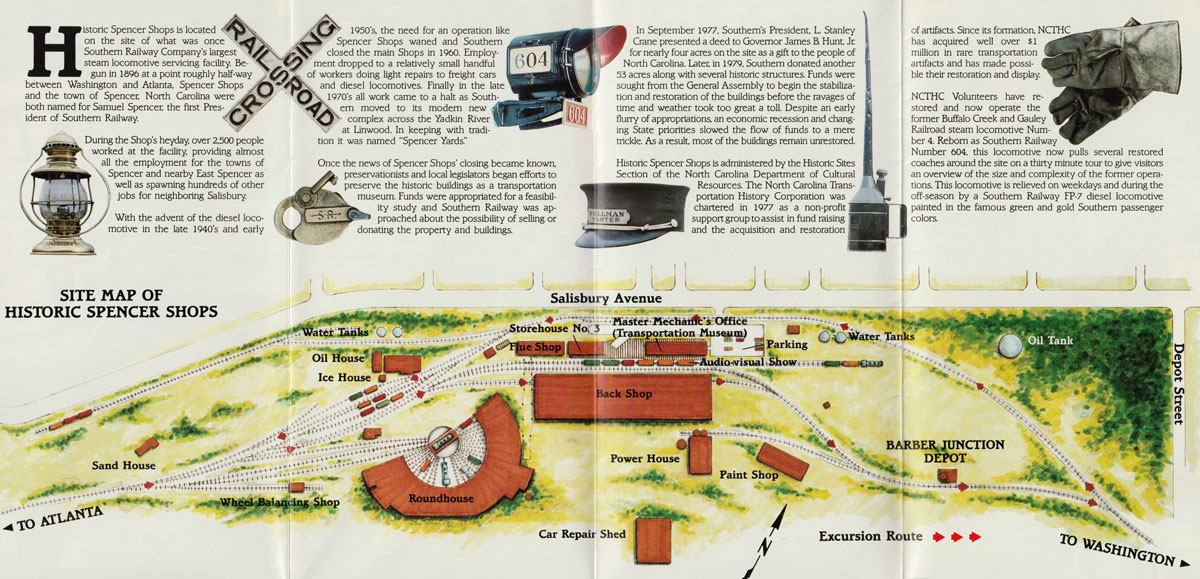
1989 brochure / collection


1989 tourist train guide ad / collection
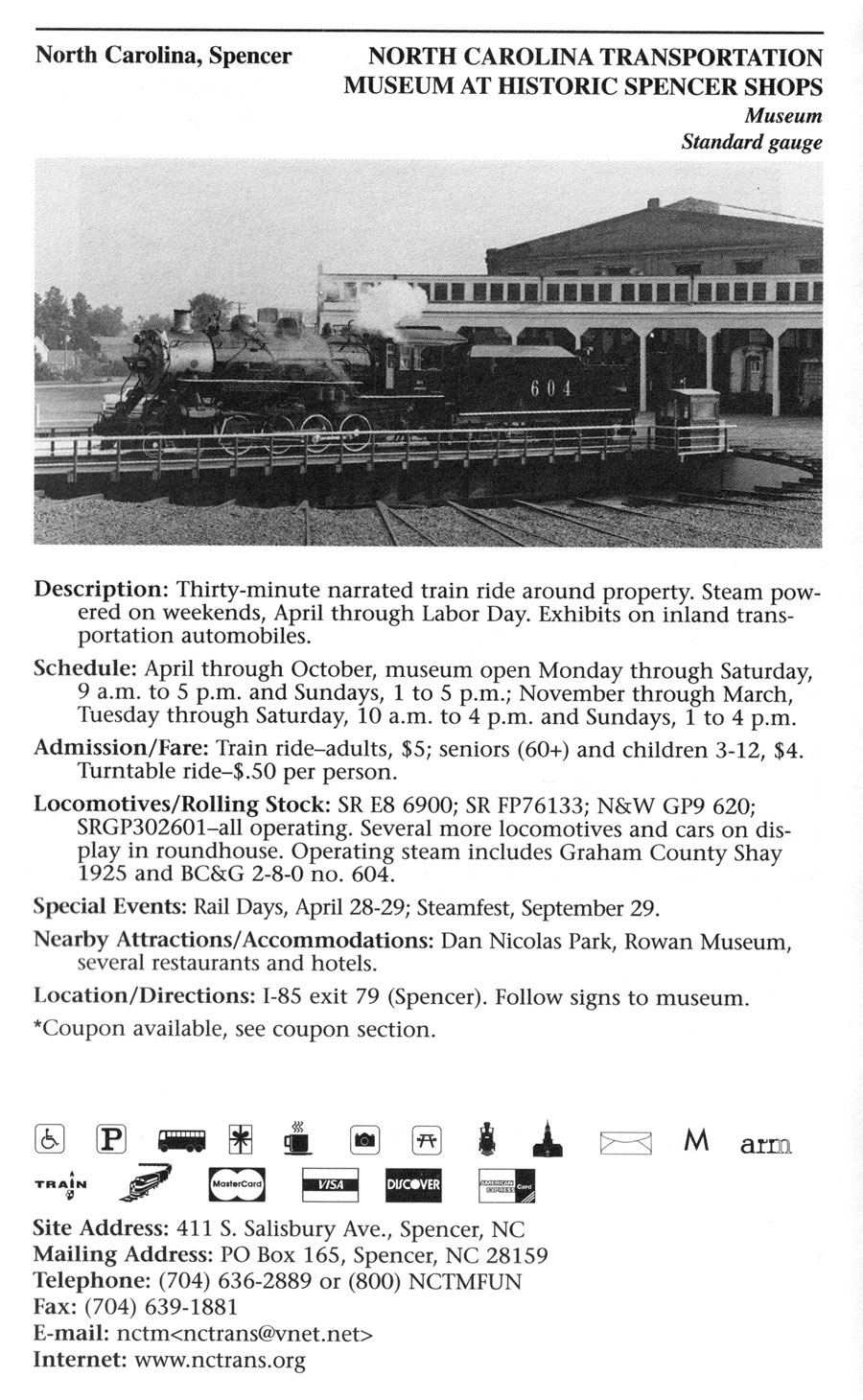
2001 tourist train guide ad / collection

Spencer, NC / Mar 2018 / RWH
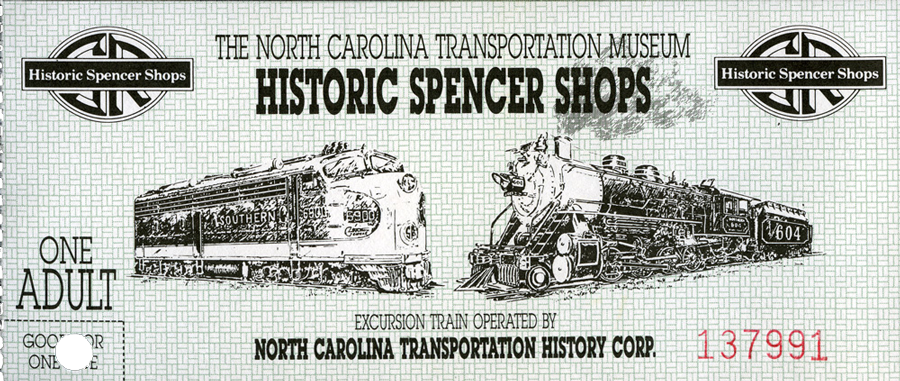
collection
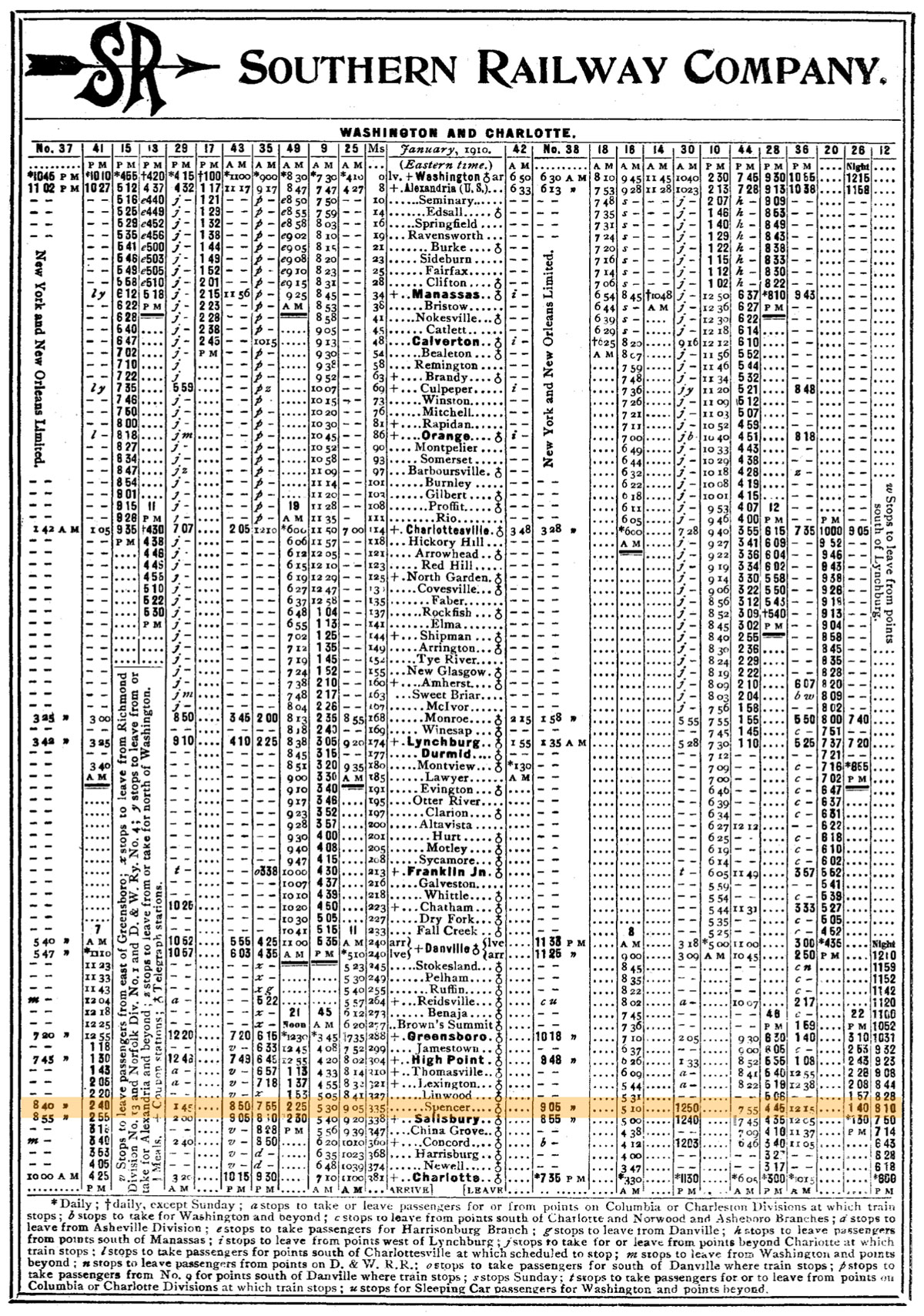
1910 Official Guide ad / collection
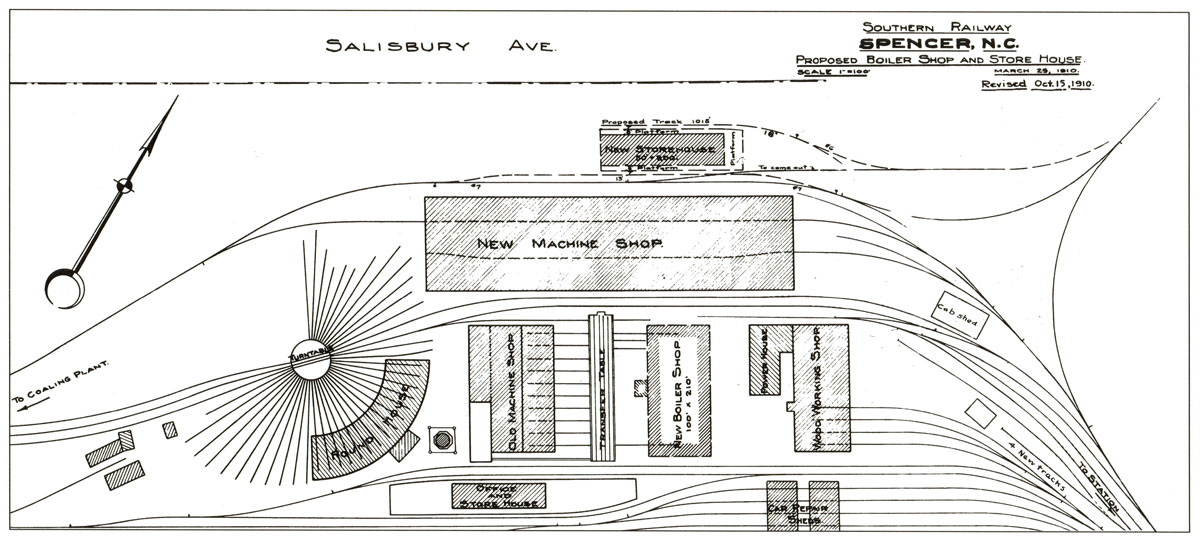
from Southern Railway's Spencer Shops 1896-1996
/ collection
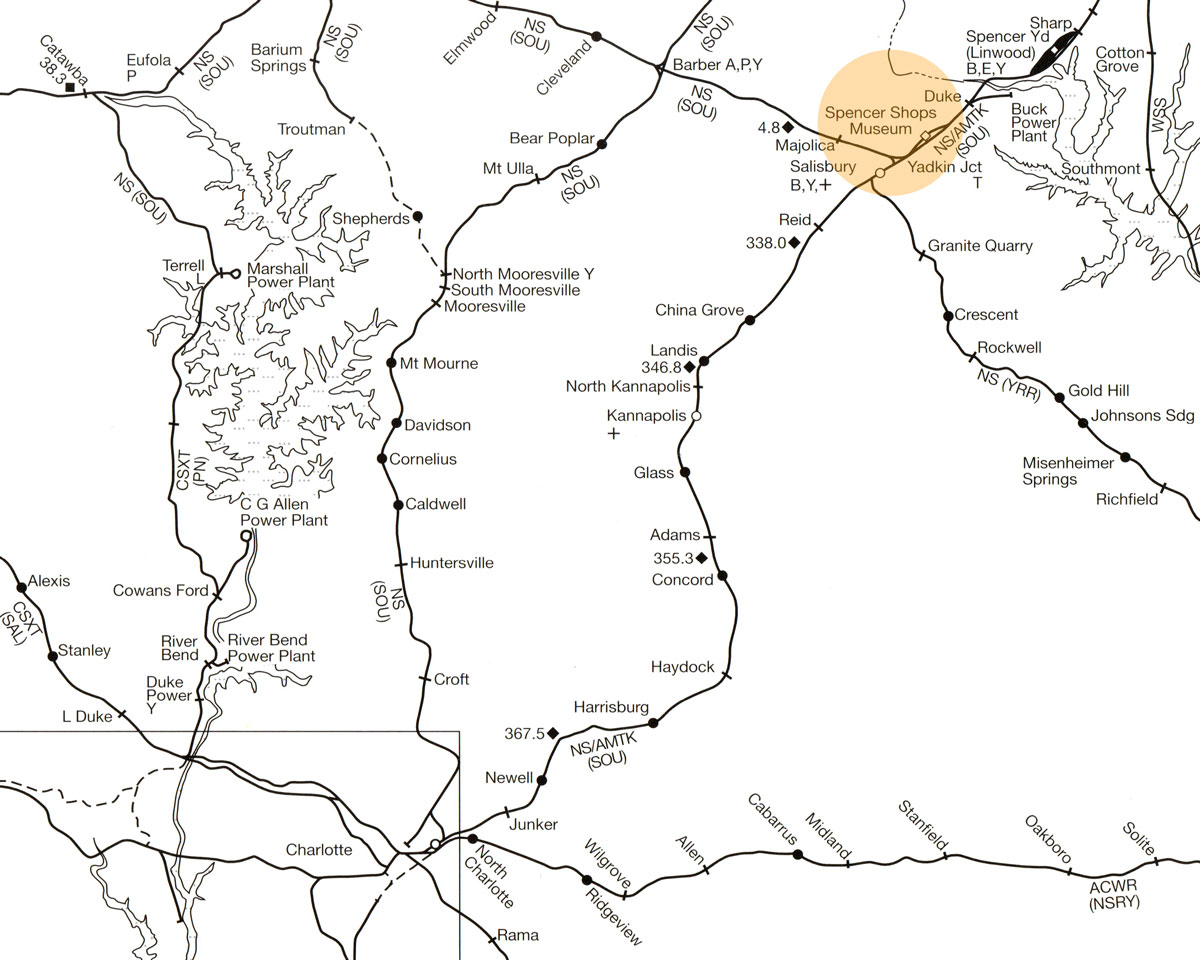
from SPV Comprehensive Railroad Atlas
/ collection
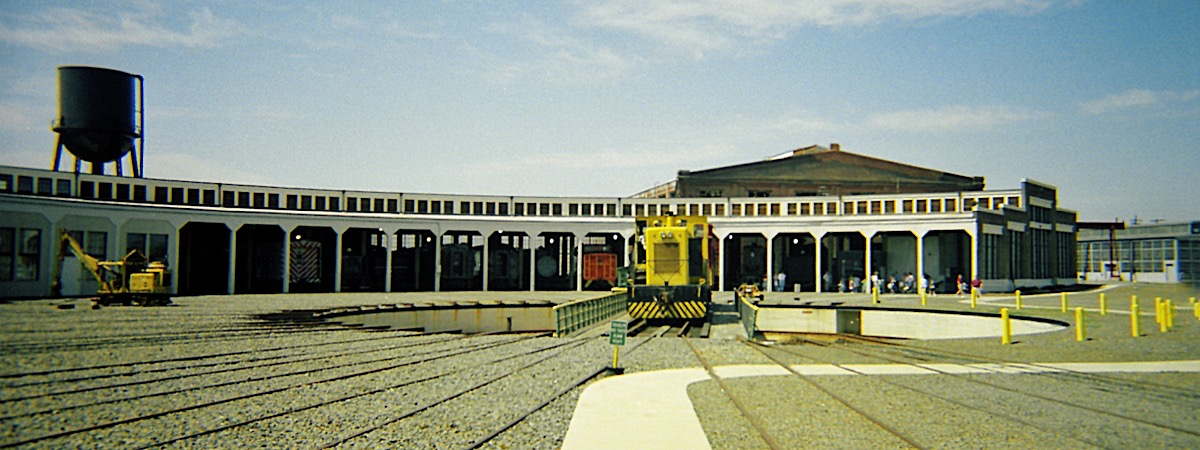
Spencer, NC / May 2001 / JCH
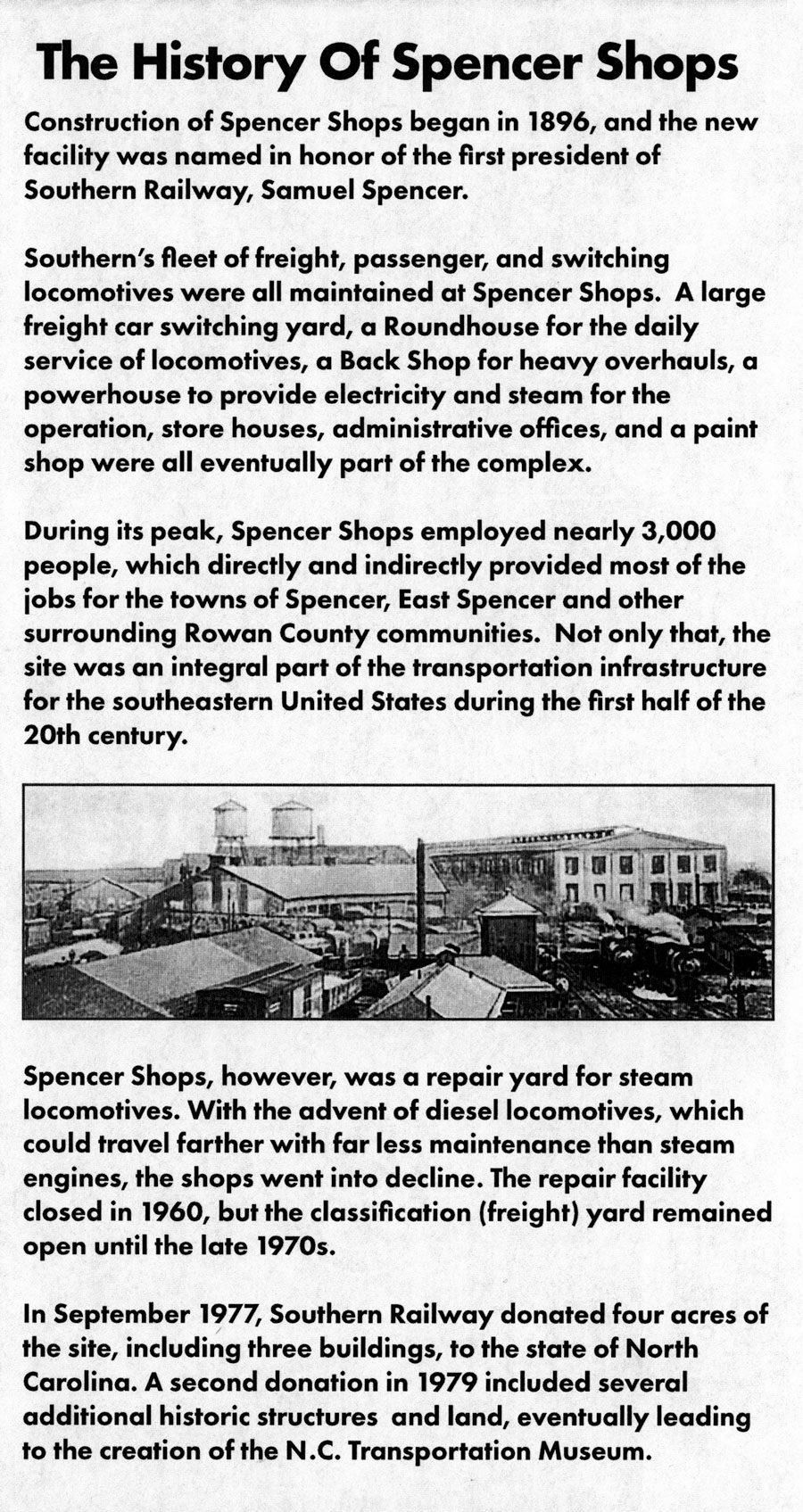
collection

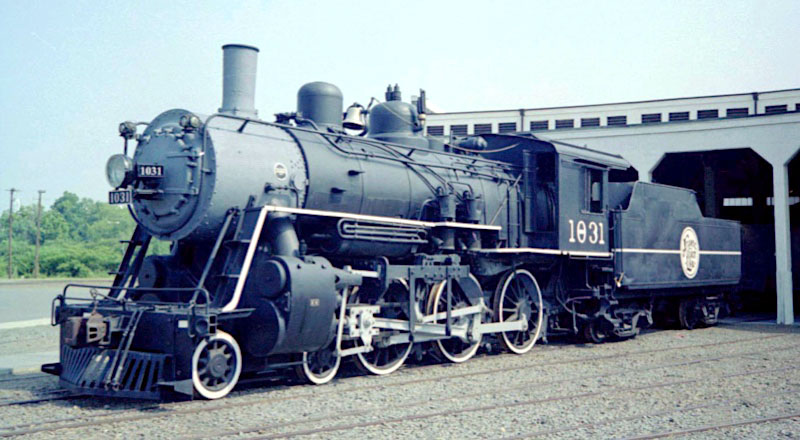


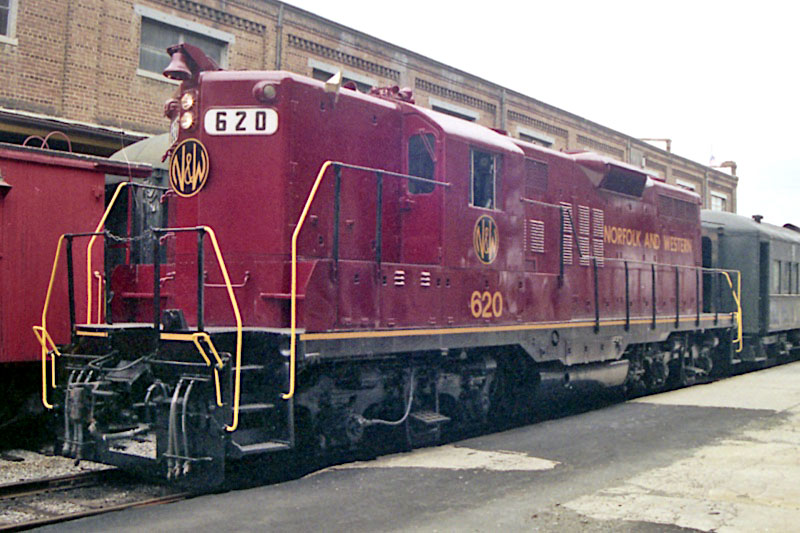
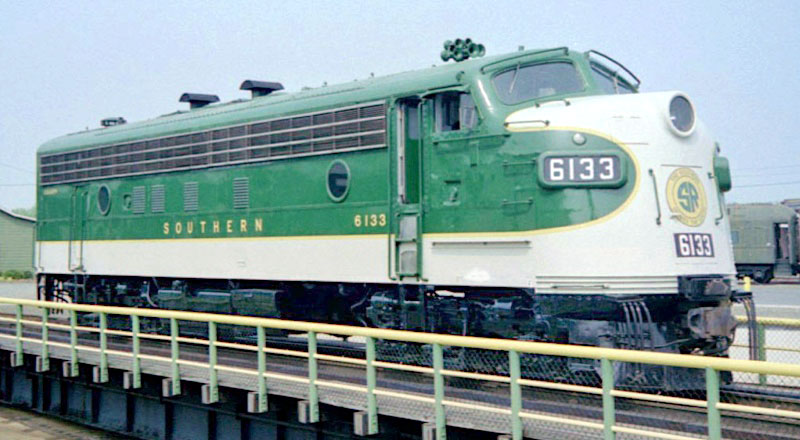
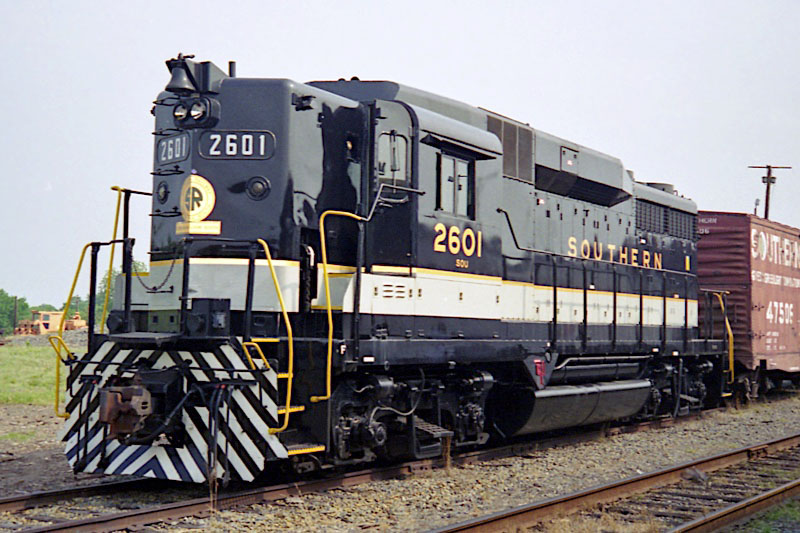
RWH

postcard / collection
Scrapbooks

Spencer, NC / Apr 2025 / RWH
 Mookie!
Mookie!
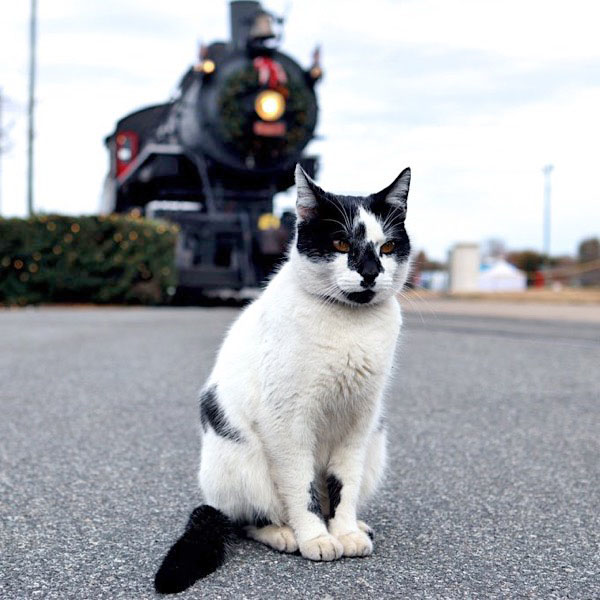
North Carolina Transportation Museum
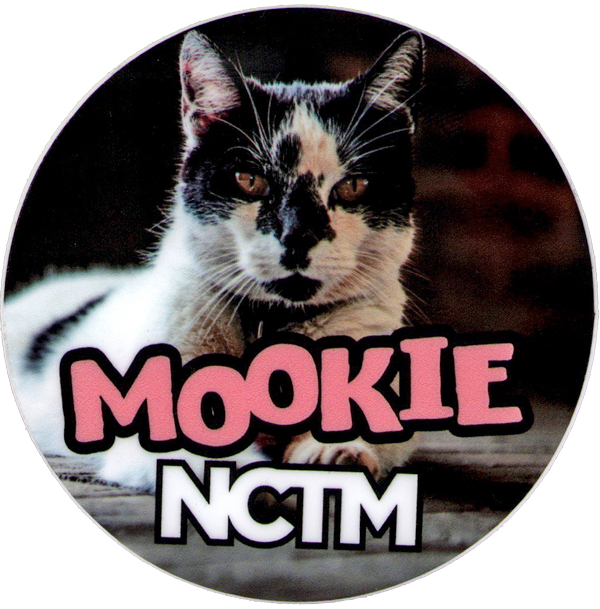
collection
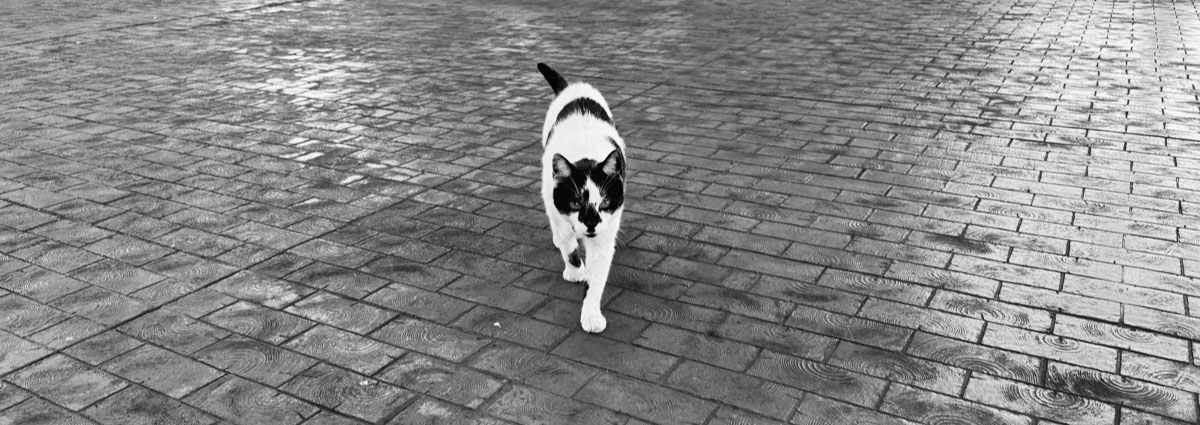
Apr 2025 / RWH
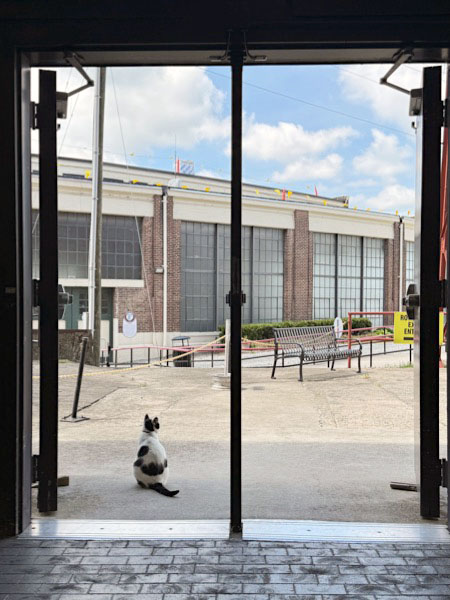
Apr 2025 / RWH

Apr 2025 / RWH
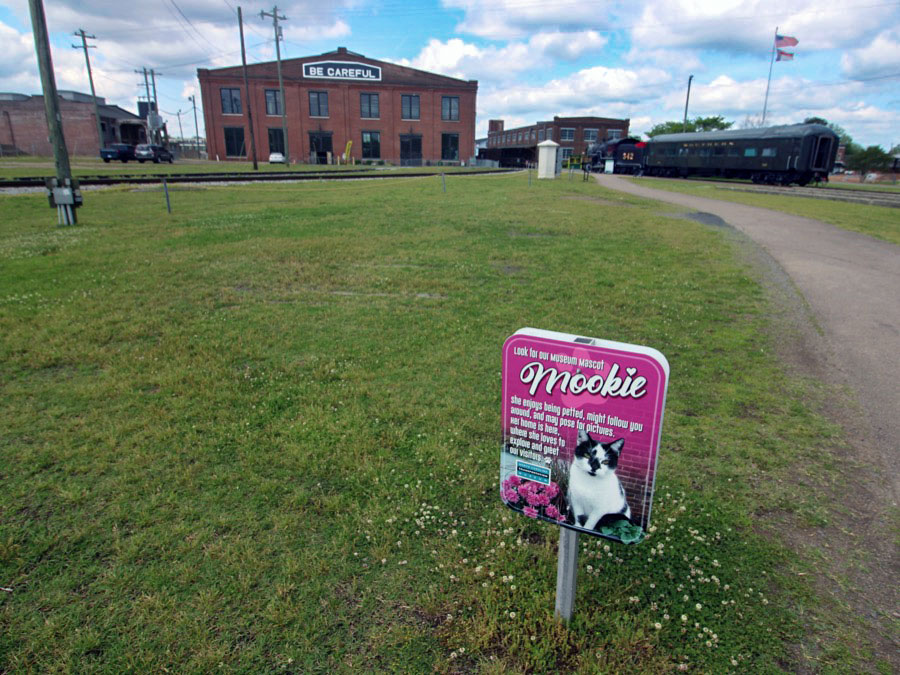
Spencer, NC / Apr 2025 / RWH
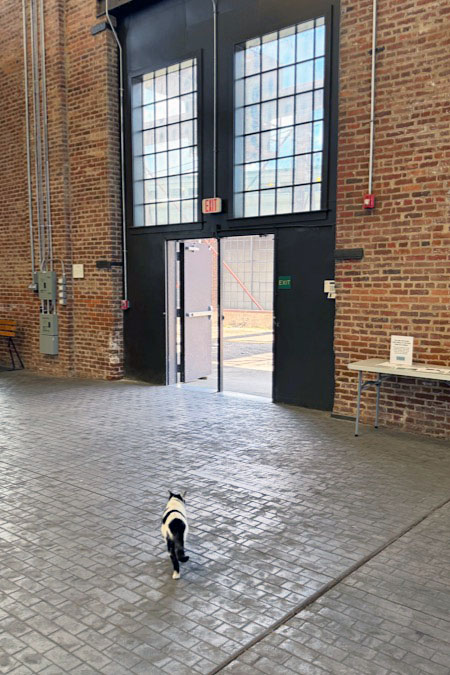
Apr 2025 / RWH

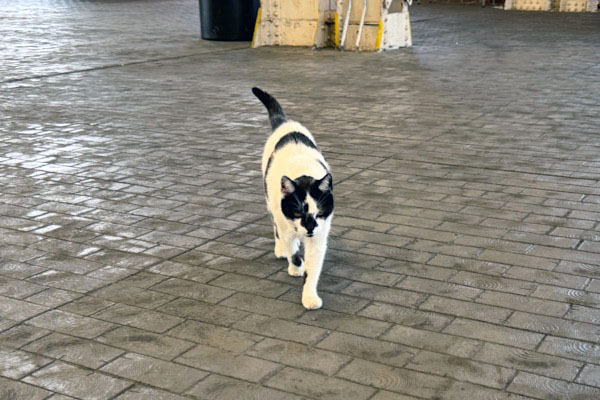
Apr 2025 / RWH
Publications
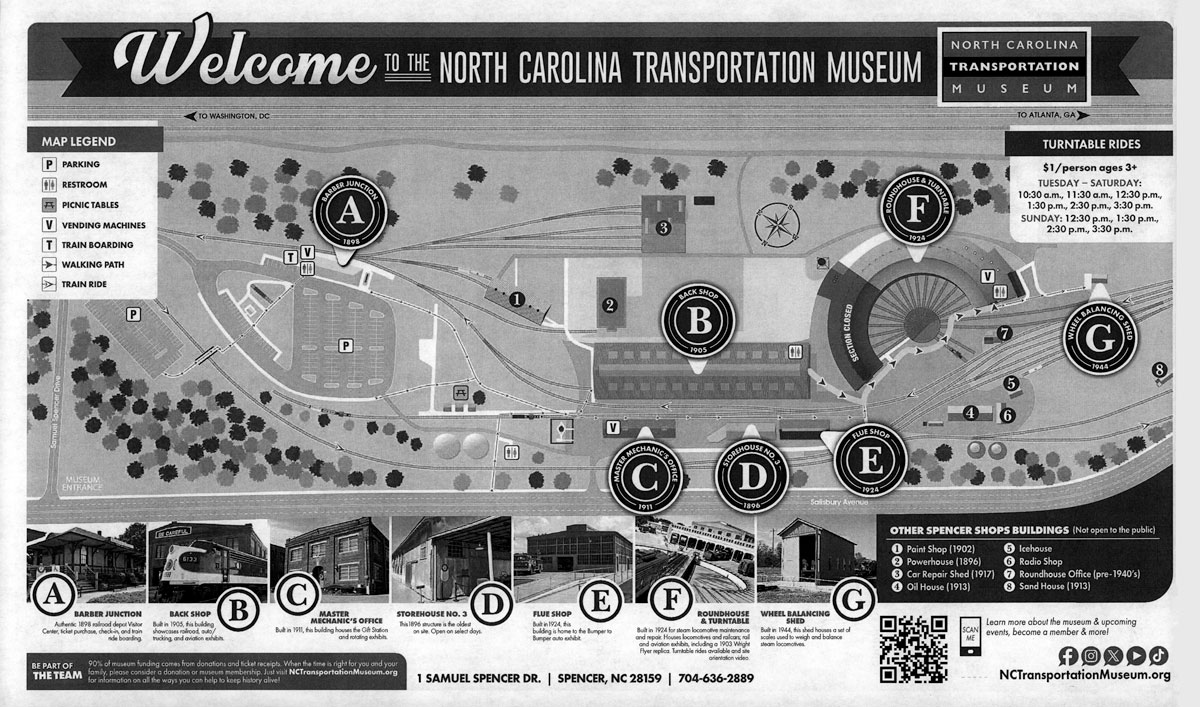
2025 museum grounds map / collection
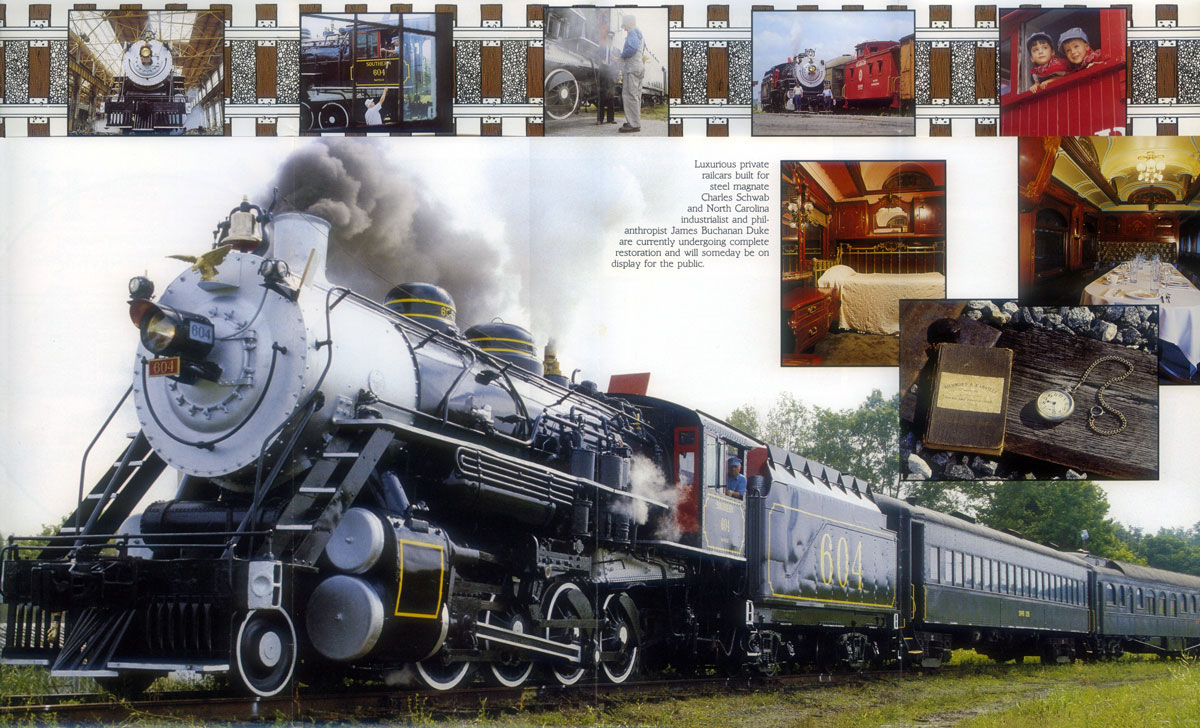
collection
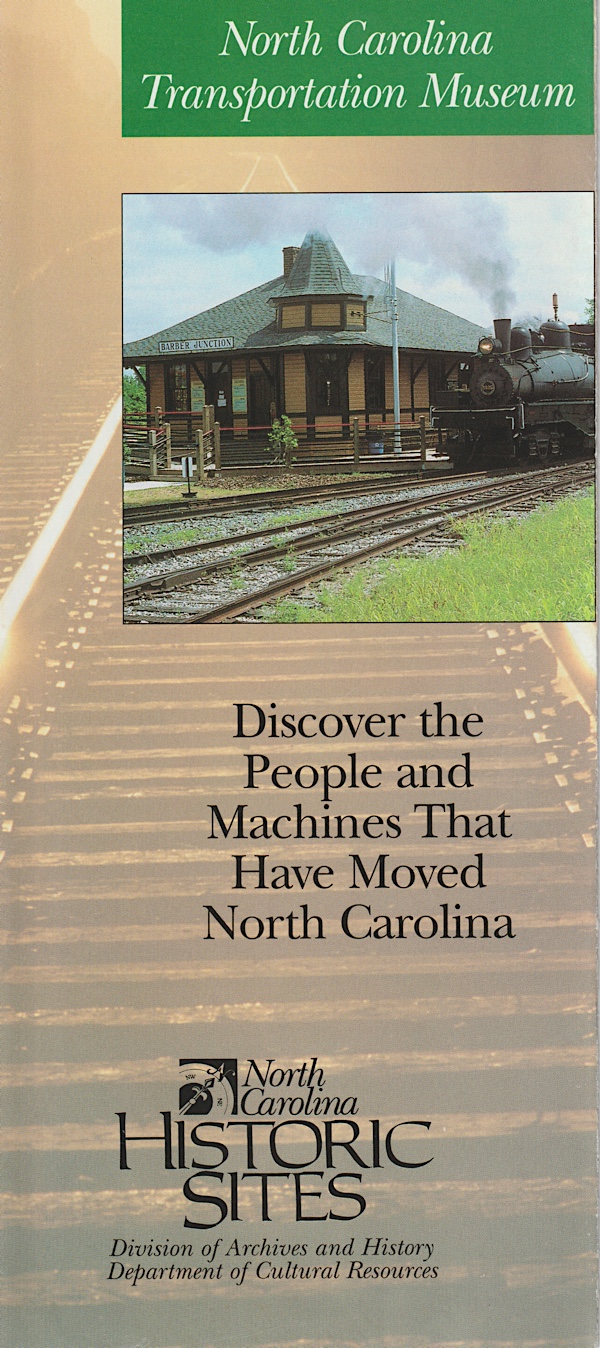
collection
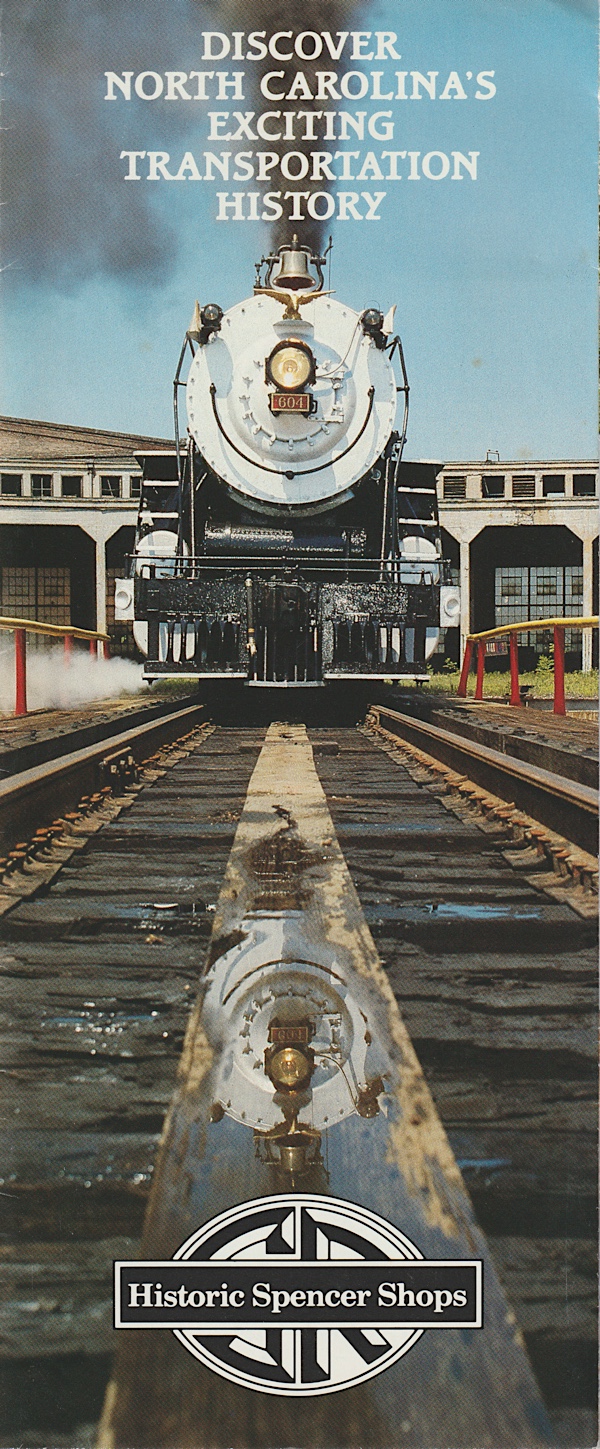
1989 brochure / collection
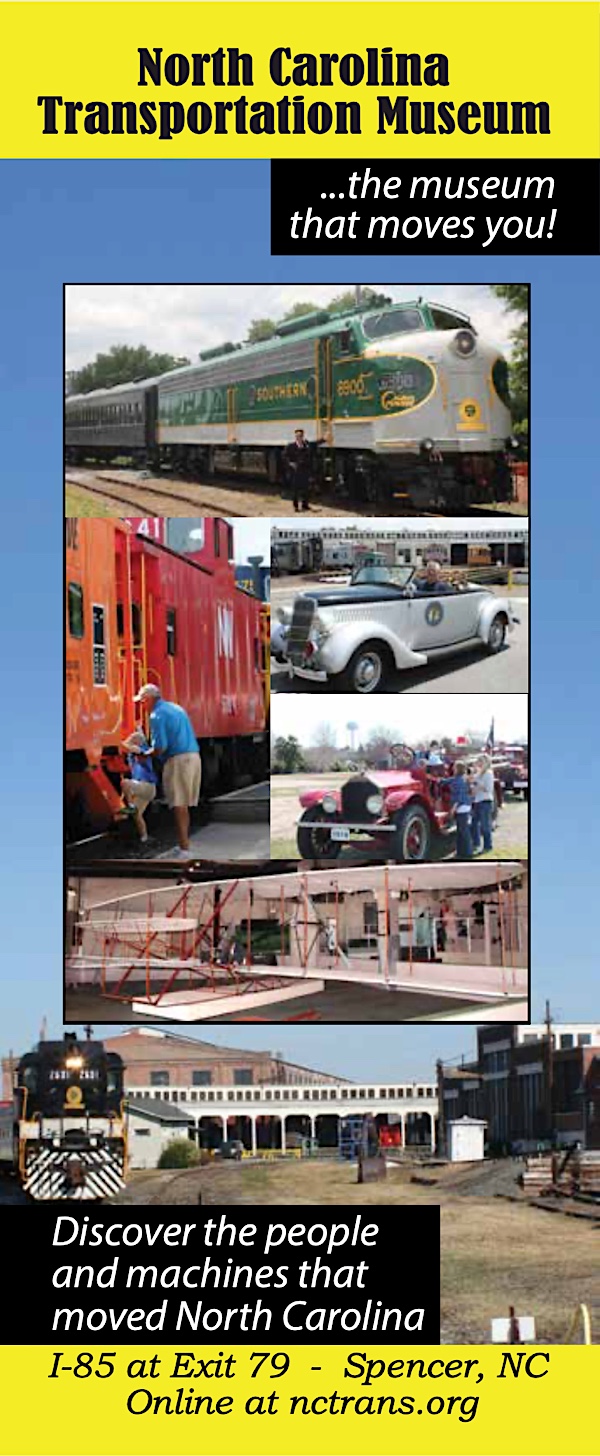
2019 brochure / collection

1989 brochure / collection
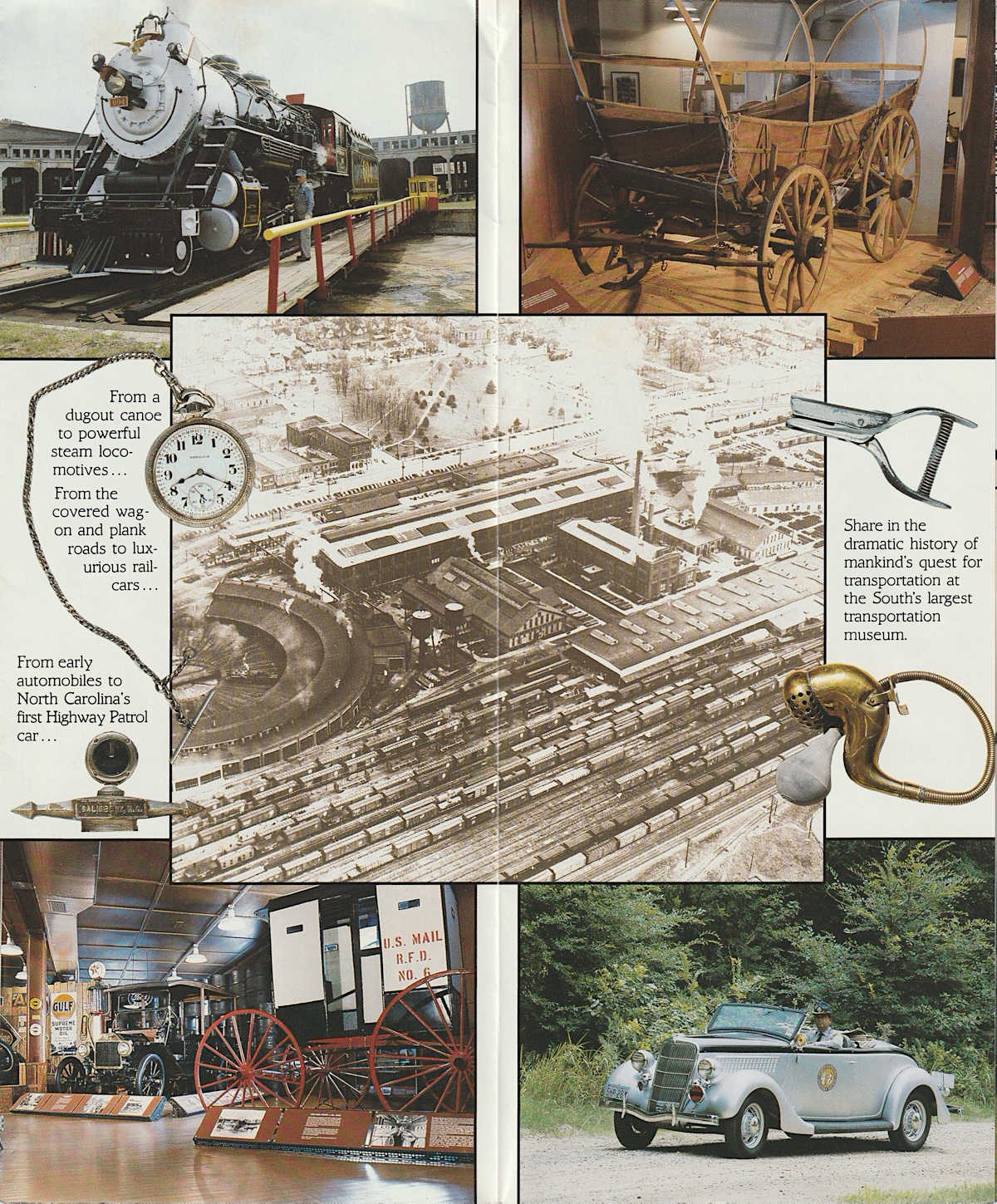
collection
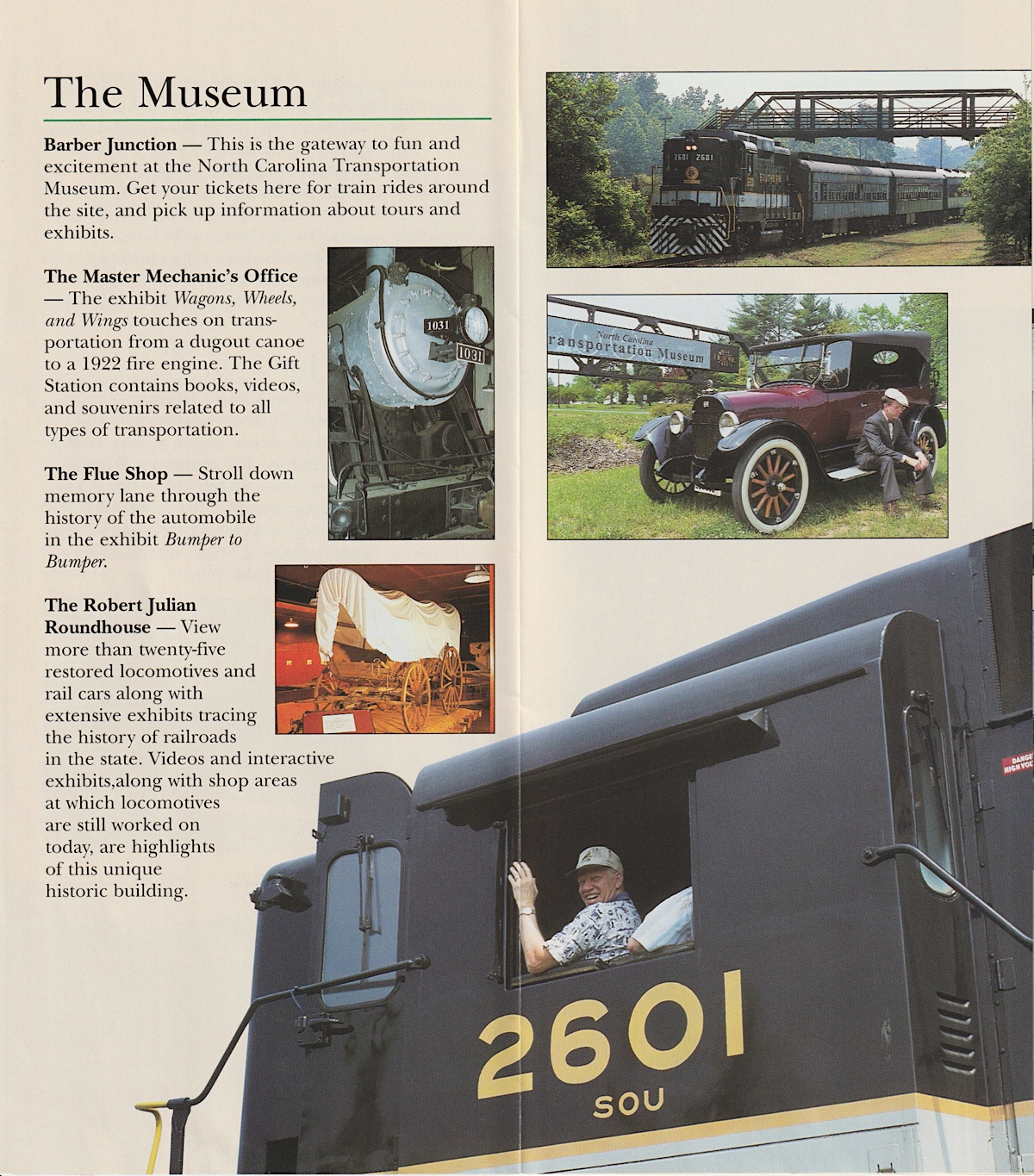
collection
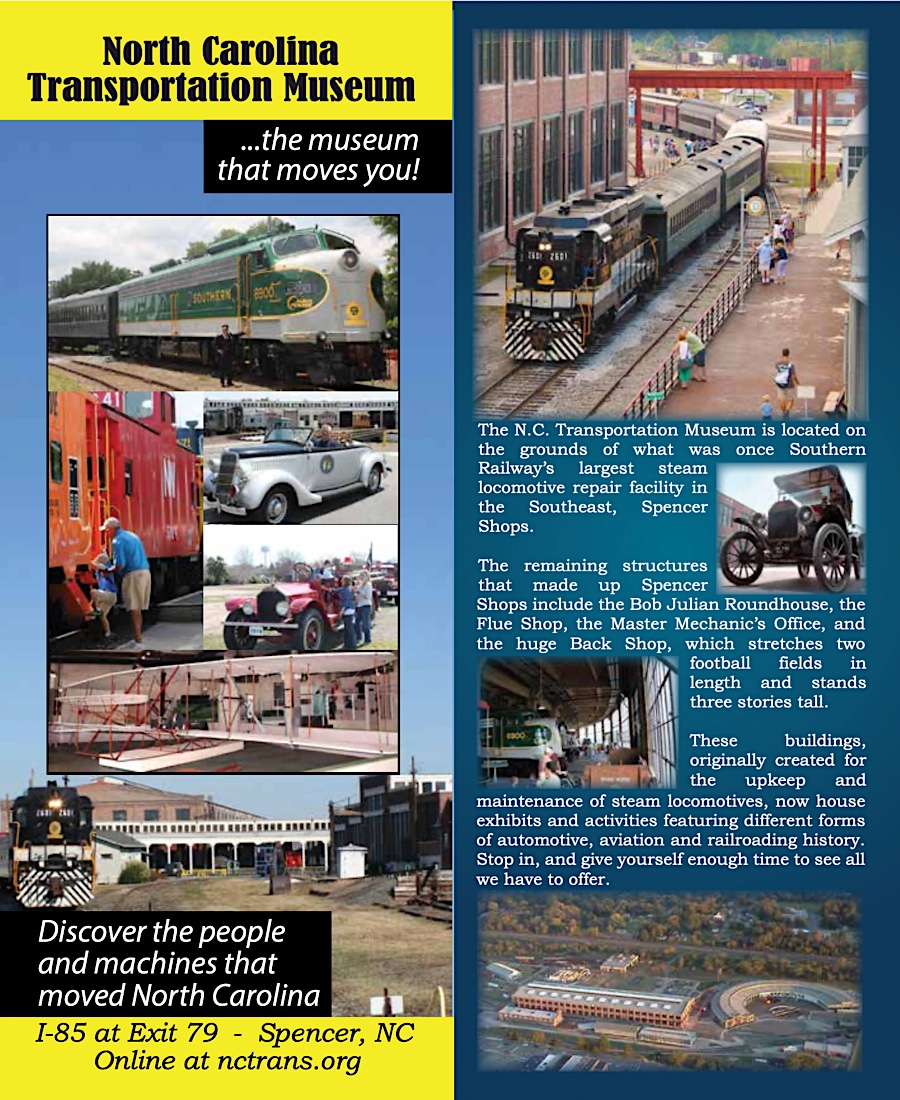
2019 brochure / collection
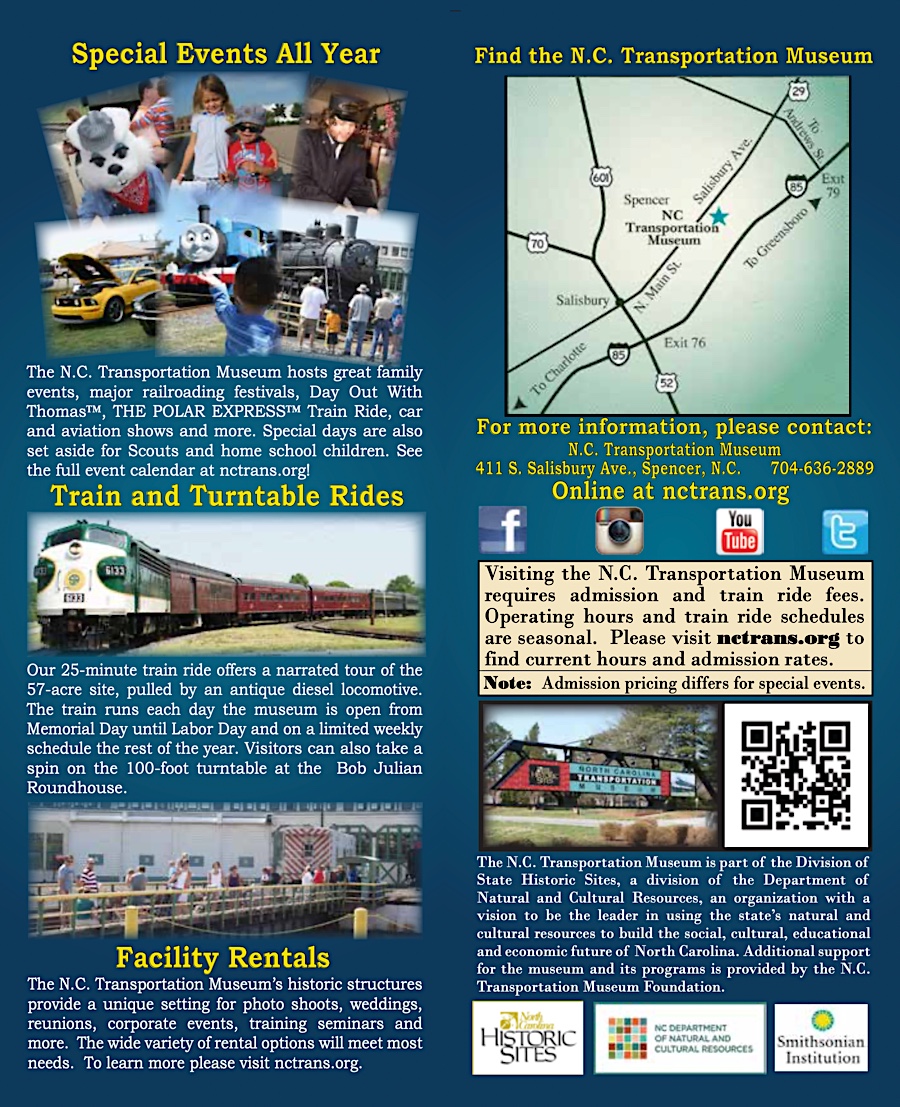

1989 tourist train guide ad / collection
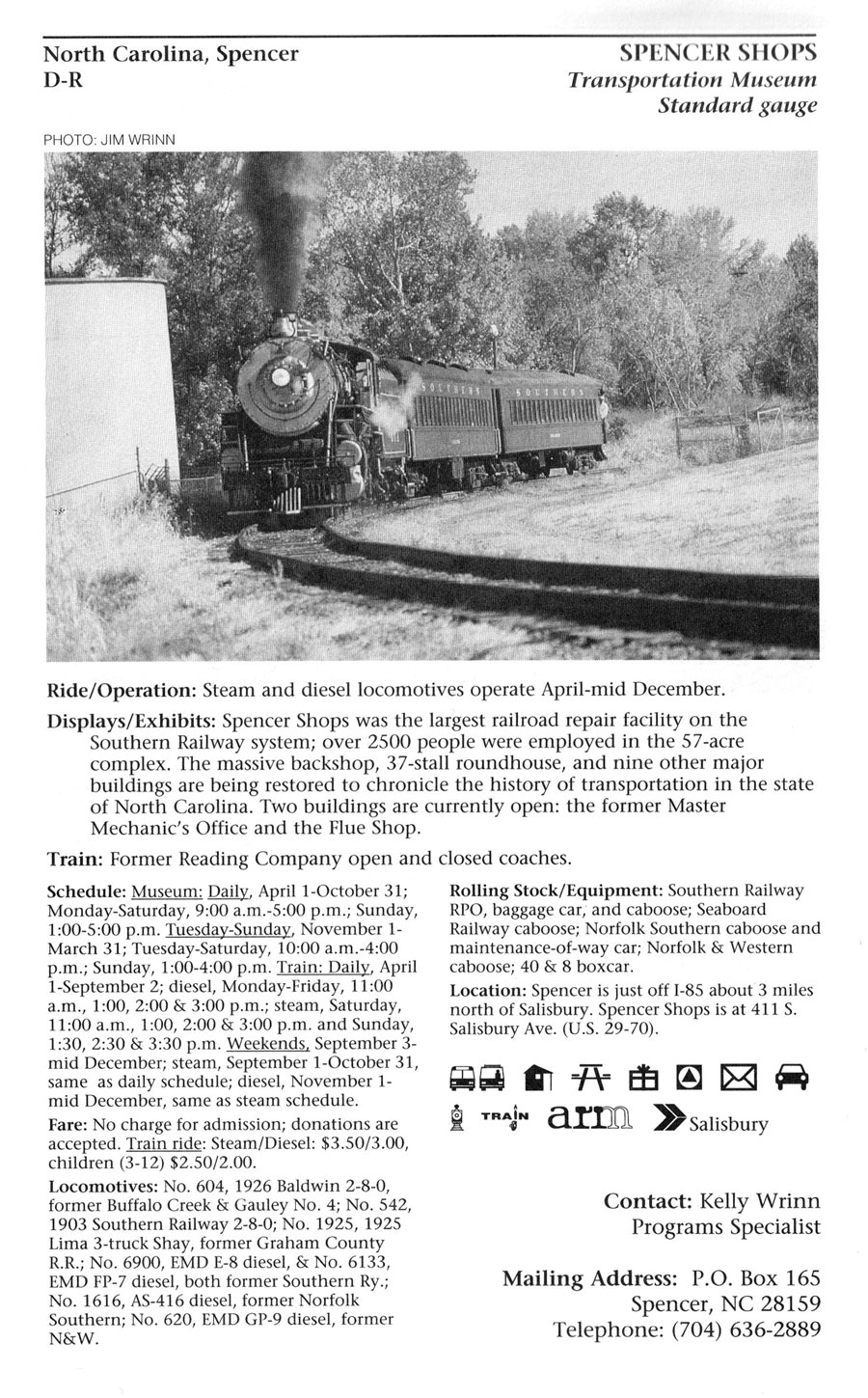
1992 tourist train guide ad / collection
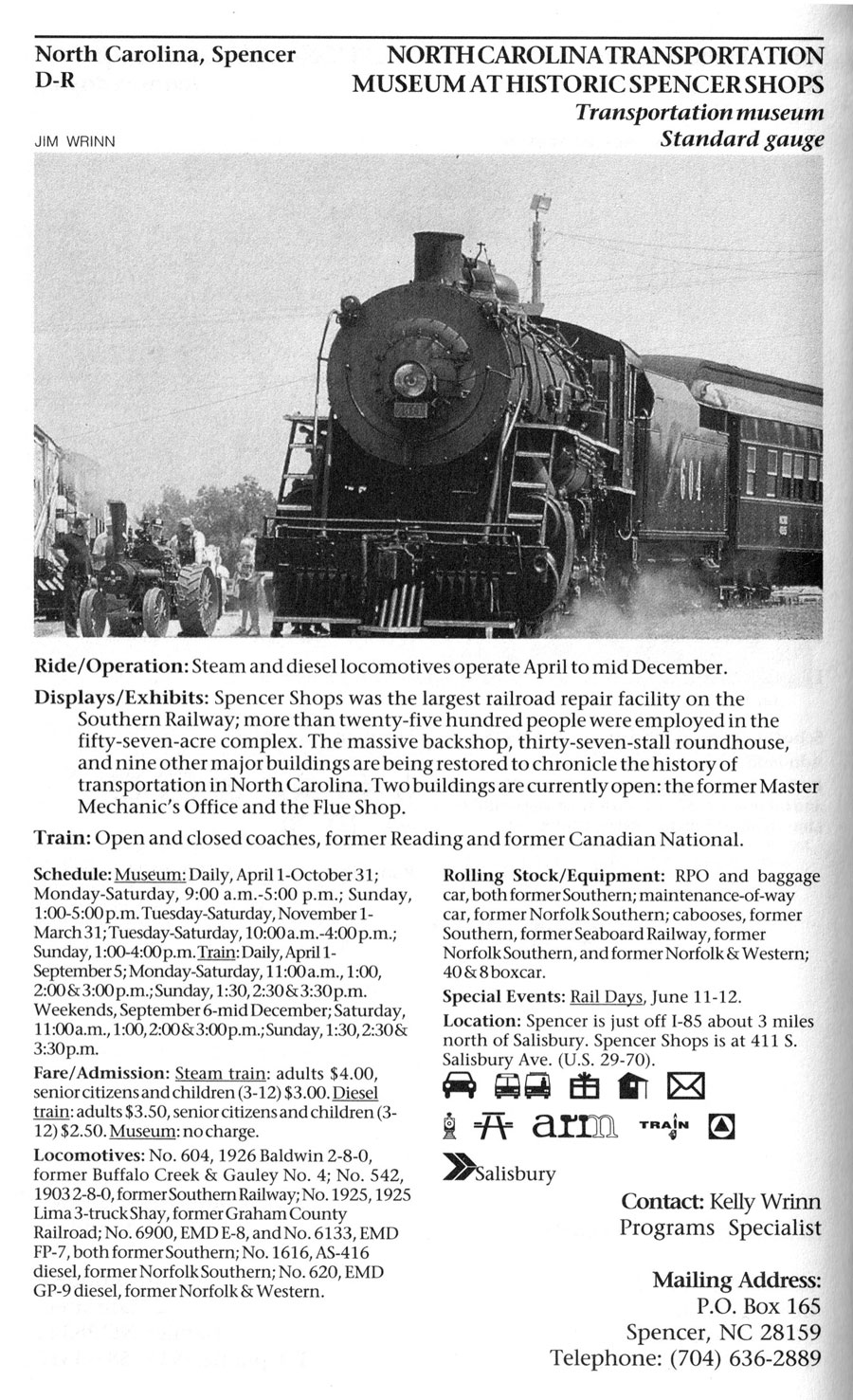
1994 tourist train guide ad / collection
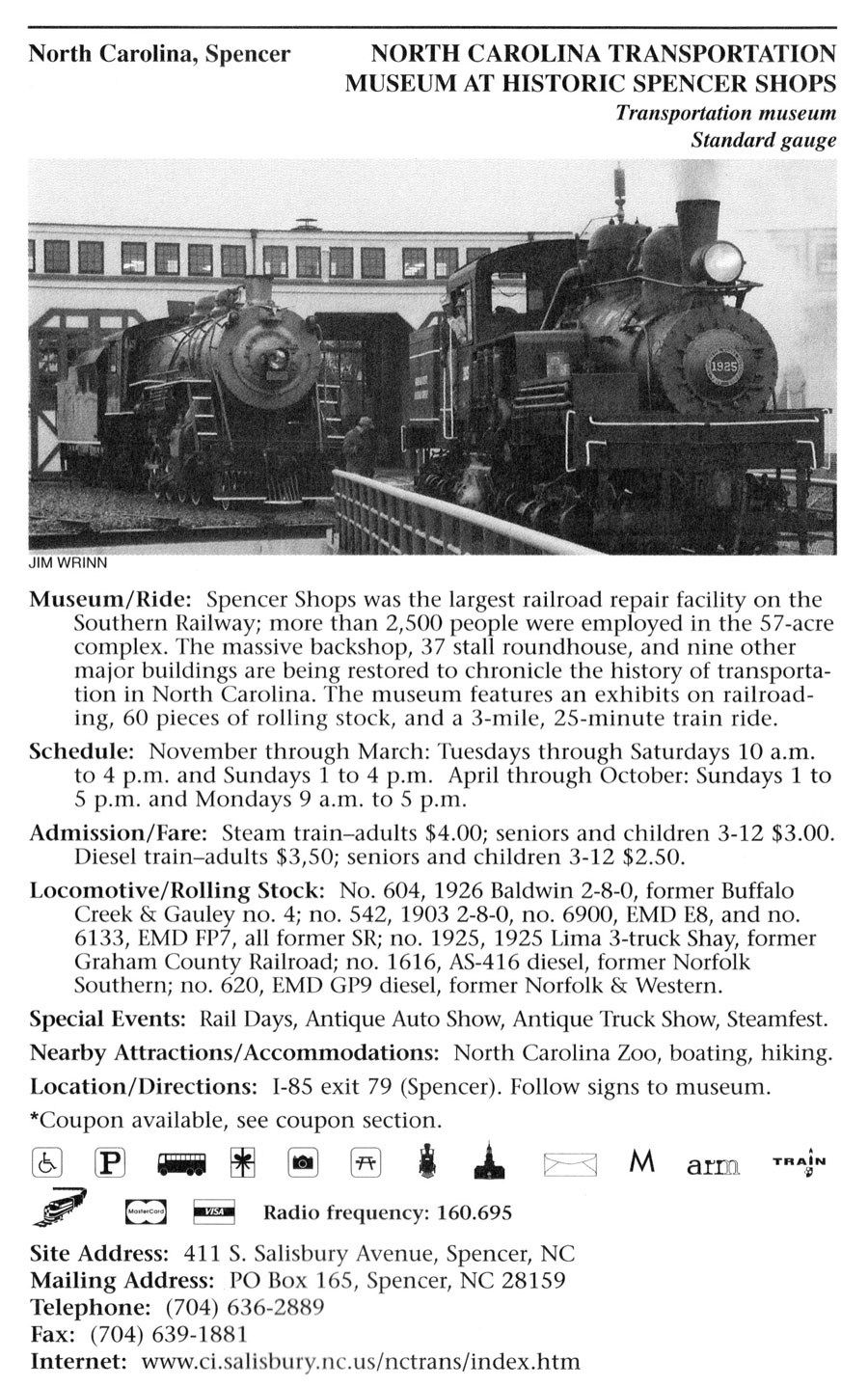
1998 tourist train guide ad / collection

2001 tourist train guide ad / collection
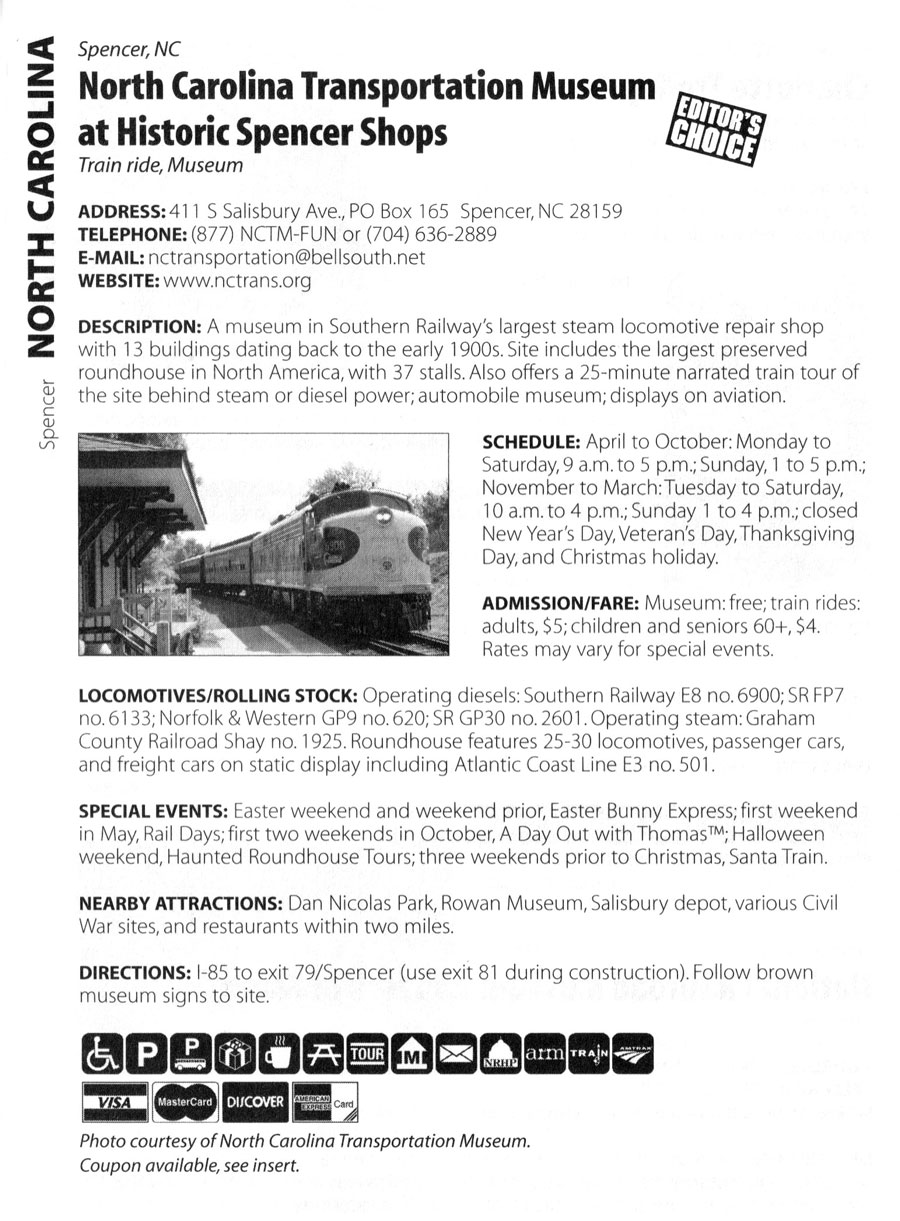
2006 tourist train guide ad / collection
 Article
Article
Industrial America Relived at North Carolina Museum
January 1988
by J. Barlow Herget - National Geographic News Service
SPENCER, N. C. - It was loud, dirty, and full of hiss and steam. Hammers clanged on steel and men shouted to be heard over the noise. It ran day and night, seven days a week. Almost 3,000 people toiled in its stalls and chambers. It was a sweating, real—life picture of industrial America at work.
This was the Spencer Shops, one of the country's largest railroad shops for steam locomotives. Today, it provides a quiet gathering place for retired railroaders and a real—life setting for North Carolina's Transportation Museum.
"If you didn't want to get dirty or listen to noise, you didn't go over there," declares C. E. "Pappy" Spear, 62, mayor of Spencer. He started work in the shops at age 17, learning to make boilers for the engines that got overhauled there.
The shops were built in 1896 and the town soon followed, both namesakes of Samuel Spencer, the Southern Railway baron. Their principal virtue was their location at Mile Post 334, midway between Washington and the big rail hub at Atlanta.
Steam locomotives had to be serviced every 150 miles, and the Spencer Shops became the Southern's largest service station.
The shops are mostly empty today. They stand silent, a hulking ghost factory built for another time but too solid to fall down. But life stirs in what once weas the master mechanic's building, adjacent to the highway that separates the 57 acres of shops from the small Piedmont town.
"There's a certain flavor of the railroad in the town," says Supervisor Michael C. Wells. "Many of the people who live here retired from the railroad and worked at the shops."
In the museum is the Spencer Ties Room, where many of the retirees come and swap stories and drink coffee. "They're proud of their railroad heritage," says Wells.
That heritage looms over the town in the massive iron and brick buildings that compose the shops. There is the main repair station known simply as the Back Shop largest of all the structures, seven stories tall and cavernous — 595 feet by 150 feet.
Pigeons roost among its broken windows and on the superstructure that held giant overhead cranes. The special wooden—peg flooring helped to absorb the noise as well as the grease and sweat of decades. Two sets of tracks run through the middle of the building, where 75 engines a day could be serviced, having rods greased and drawbars tested, getting sand in their sandboxes and oil in their cooling systems.
Close by is the great, 37-bay roundhouse that has been returned to working order this year. "It's the biggest one I've ever seen," says W." L. "Buck" Honeycutt, 61, who was 19 when he went to work at the shops.
The sprawling grounds include the powerhouse that generated its own steam and electricity for the 1 million square feet of shop space. Other buildings include the paint shop, flue shop, ice house, and oil house. A converted rail car now serves as a theater for museum programs.
In the old days, there was the feared lye pit, used for cleaning greasy metal parts. As Spear recalls, "They had this huge pit, and people worked around there all the time. That lye was pretty strong, and it was the end of you if you fell in."
Across the highway is a restaurant where Evelyn Krider has tended the counter since 1943 and remembers the fare and prices of those days: "One meat, two vegetables, a drink, and dessert for 47 cents," she says.
They had an efficient system, .says Mrs. Krider: "We would reserve their seats for them and send someone over with a menu, and they'd mark their names beside what they wanted, so that when they got here, they had their meals waiting for them. You dared not get their seats. They generally liked something that would stick to them, pinto beans and dumplings, chicken-fried steak. No fancy vegetables like broccoli."
The advent of diesel engines, which required less maintenance, spelled the end of the Spencer Shops, although it was I960 before the shops closed. "I got sick," says Honeycutt of the day they shut the shops. "The memories that come back to me is how men could take steel and put it together amnd make an engine out of it." The memories come back to others, too, in the famous ballad, The Wreck of the Old 97. It was to Spencer that the locomotive was speeding in 1903 when it failed to make a curve and plunged into a ravine, killing the engineer and 10 others.
And, not far from the shops one October night in 1901, one of Buffalo Bill's Wild West Show trains collided head-on with freight engine No. 75. Ninety-two horses perished, and 40 more had to be shot. Amazingly, no people were killed, but the wreck left markswoman Annie Oakley partially paralyzed.
Supervisor Wells hopes to bring back many of the Spencer Shop memories. With help from townsfolk and museum patrons, some 40 pieces of rolling stock and six engines are "being restored. They include a Baldwin No. 4 steam engine and elegant private cars once owned by steel and tobacco magnates.
Wells also helps organize railroad excursions through the Blue Ridge Mountains with retired conductors and open-air coaches.
The Spencer Shops are only five minutes off Interstate 85. But by rail, one can alight no nearer than Salsibury, several miles away. The trains don't stop at Spencer anymore.
The Paris News - Paris, Texas
 Lagniappe
Lagniappe
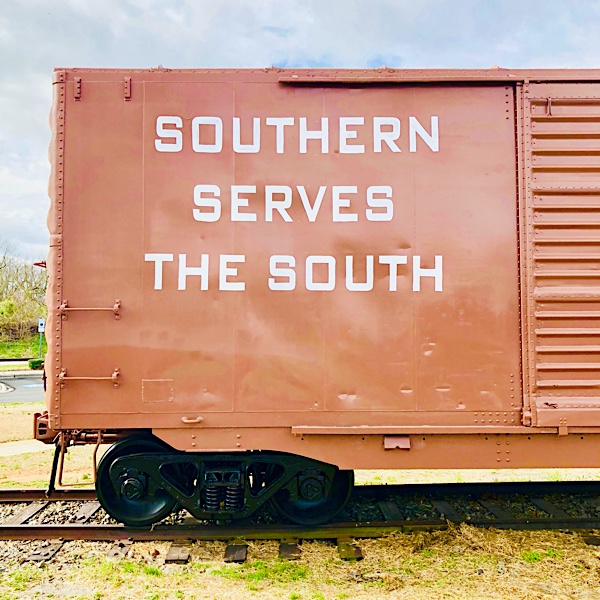
Servant Leadership
Spencer, NC / Mar 2018 / RWH
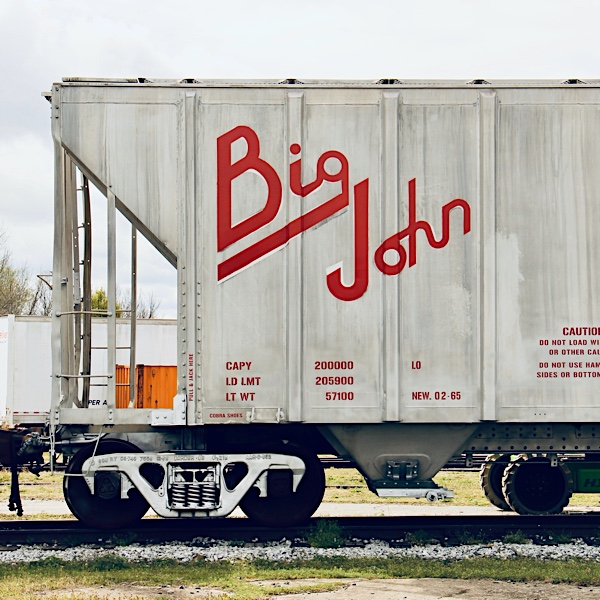
The Old Man Lives
Spencer, NC / Mar 2018 / RWH
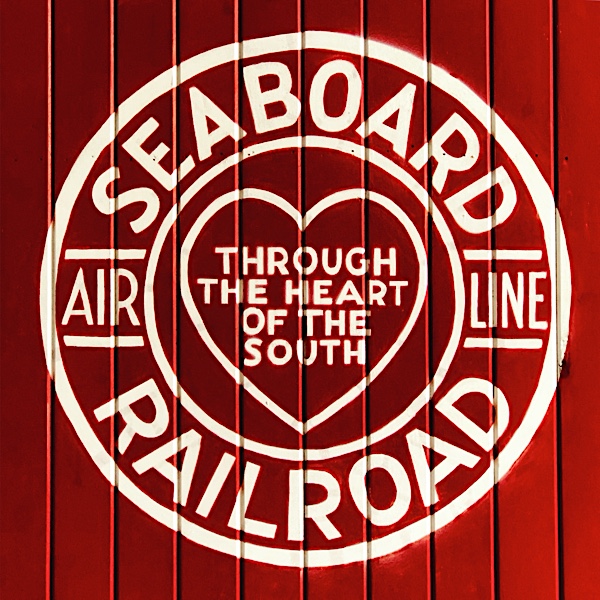
Heartthrob
Spencer, NC / Mar 2018 / RWH

There Were Better Days
Spencer, NC / Mar 2018 / RWH
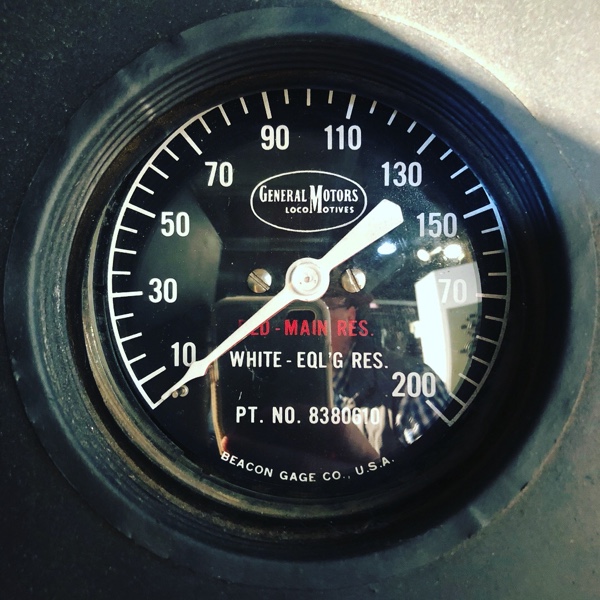

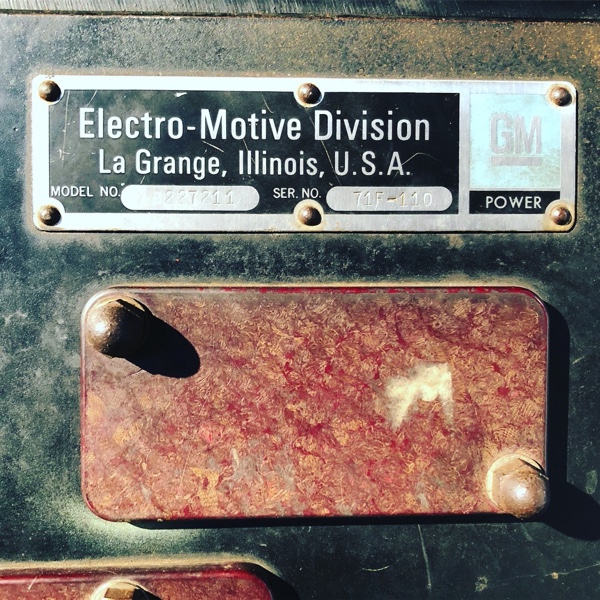
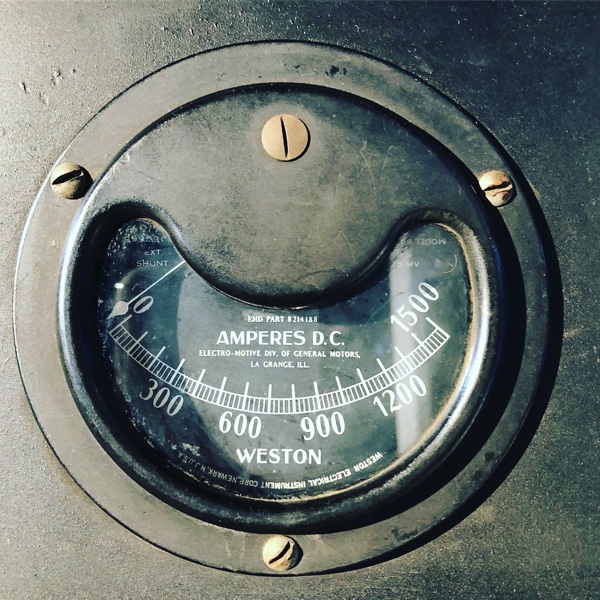
General Motors Gems
Spencer, NC / Mar 2018 / RWH

Hermeneutics
Spencer, NC / Mar 2018 / RWH

Angle of Attack
Spencer, NC / Mar 2018 / RWH
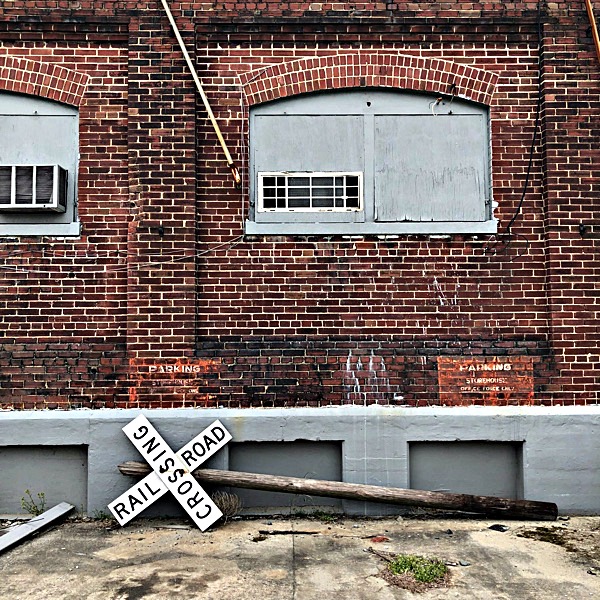
Lying Down on the Job
Spencer, NC / Mar 2018 / RWH
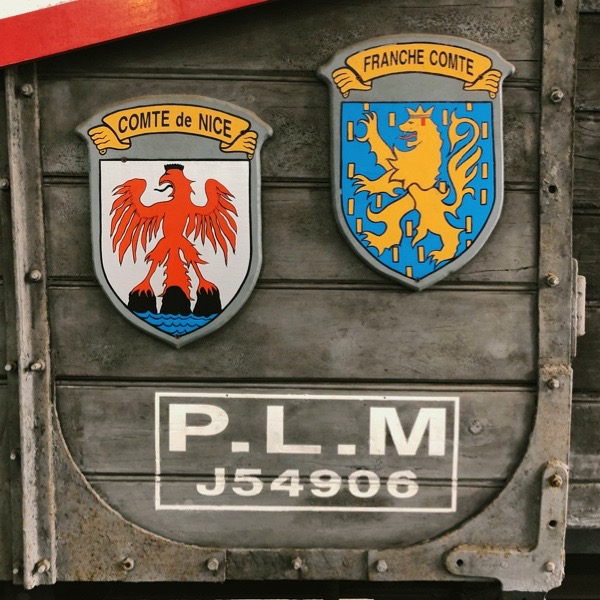
Vive la France
Spencer, NC / Mar 2018 / RWH
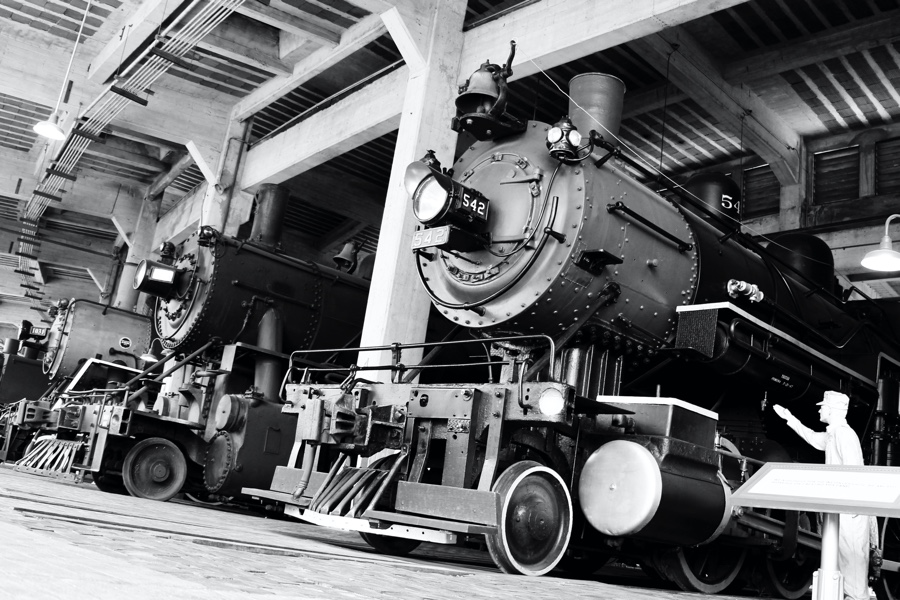
Sisters of Memory
Spencer, NC / Mar 2018 / RWH
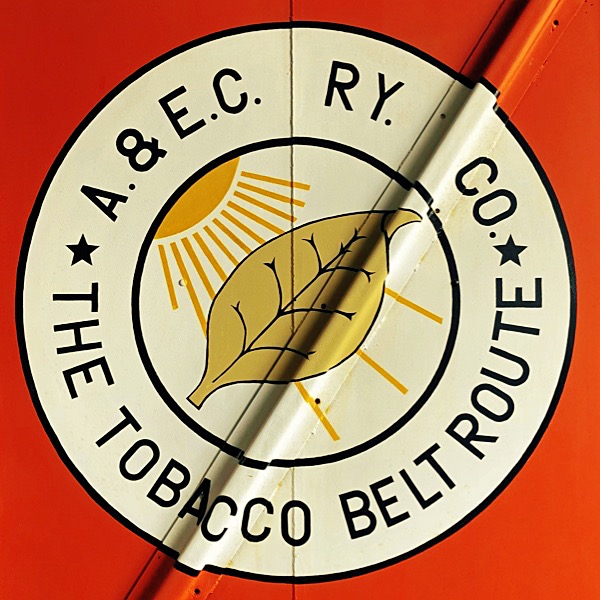
The Tobacco Belt Route
Spencer, NC / Mar 2018 / RWH
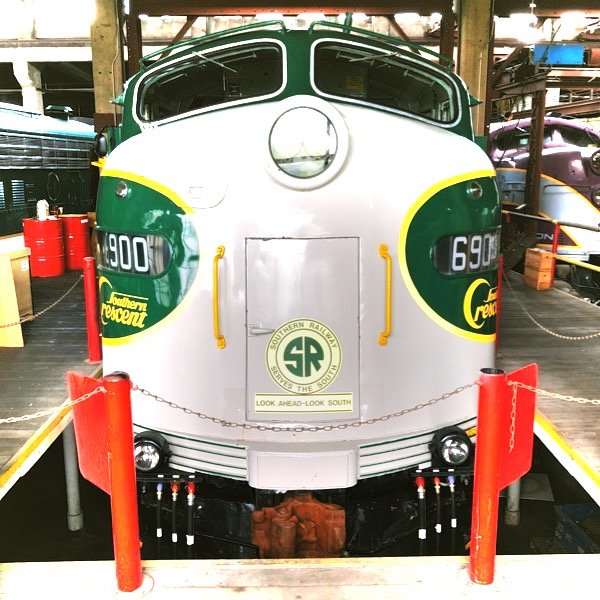
Glamour Girl
Spencer, NC / Mar 2018 / RWH

If I Only Had a Brain
Spencer, NC / Mar 2018 / RWH
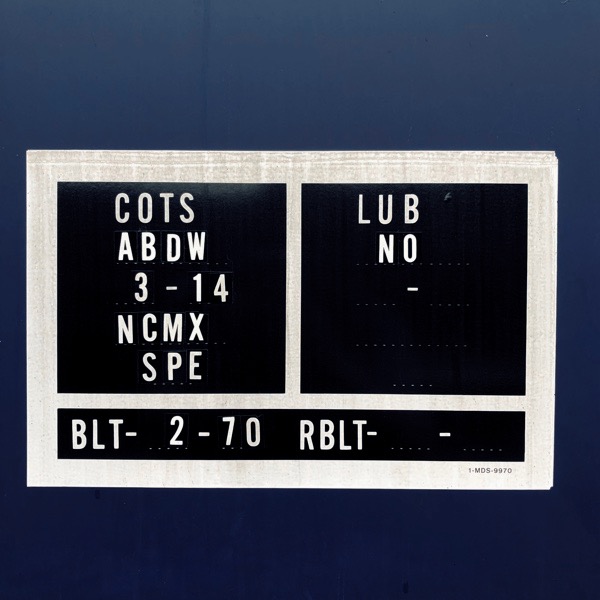
Generation Xer
Spencer, NC / Mar 2018 / RWH

Straight Through the Heart
Spencer, NC / Mar 2018 / RWH

Fixer Uppers
Spencer, NC / Mar 2018 / RWH
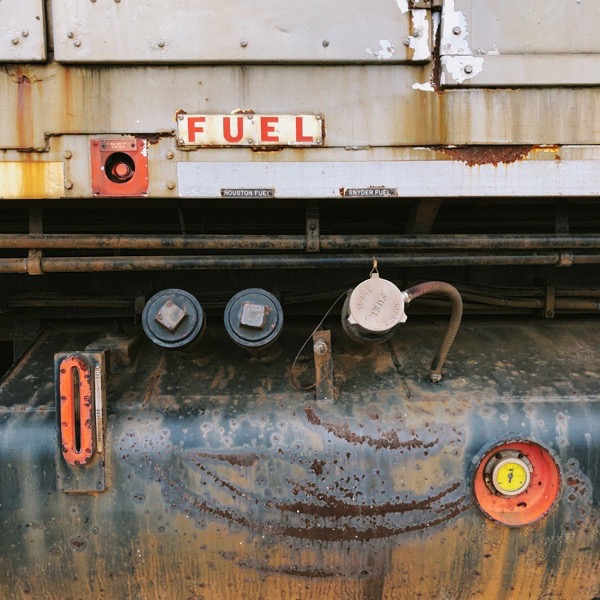
Longing for a Connection
Spencer, NC / Mar 2018 / RWH

Samuel the Sage
Spencer, NC / Mar 2018 / RWH
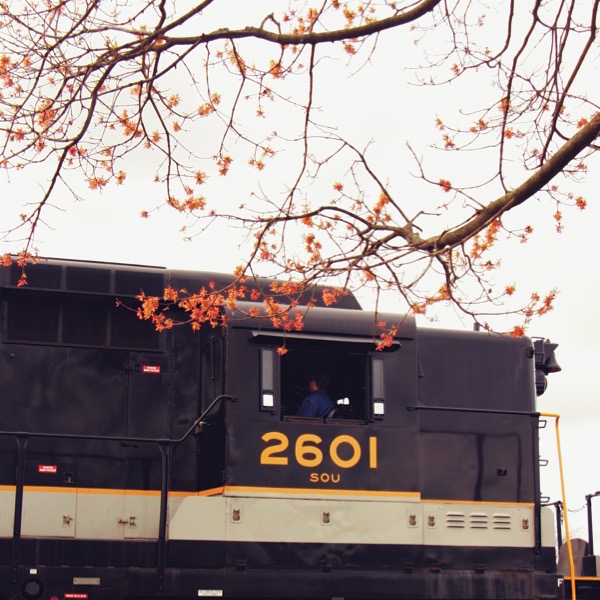
Moment in March
Spencer, NC / Mar 2018 / RWH
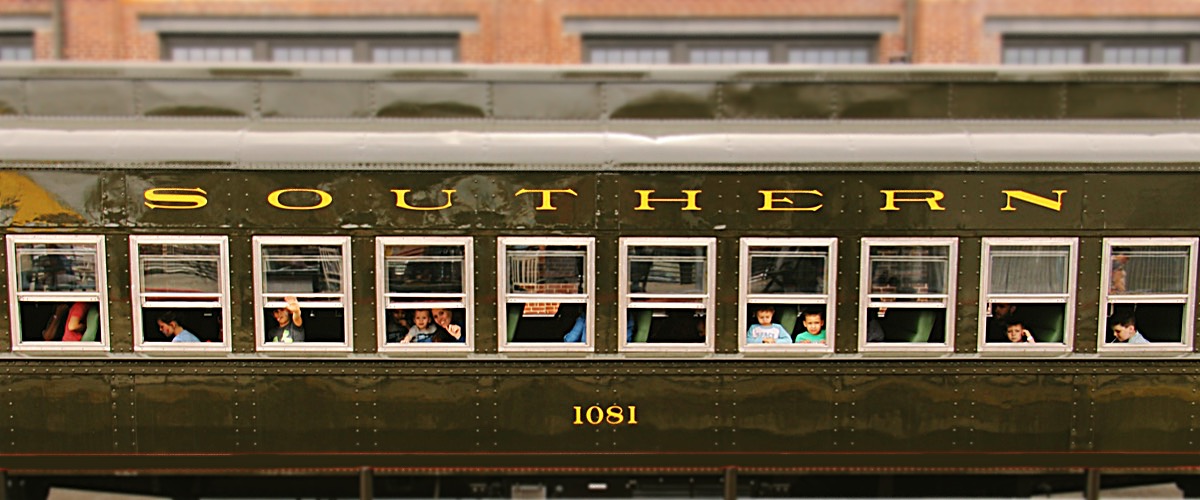
Mr. Spencer's Guests
Spencer, NC / Mar 2018 / RWH
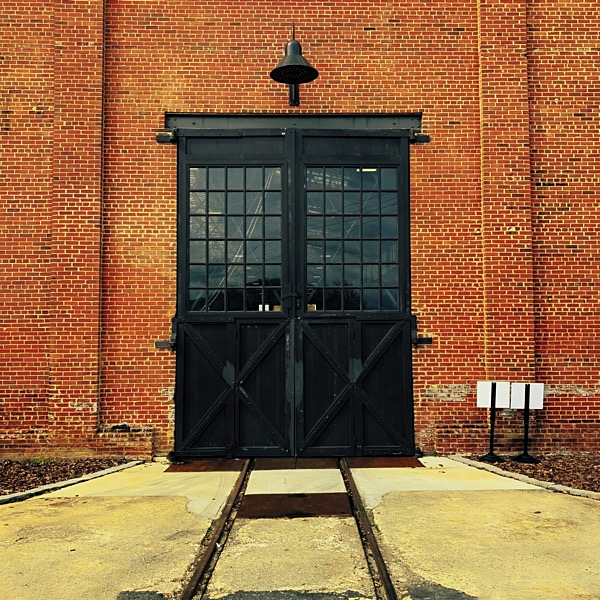
Time Portal
Spencer, NC / Mar 2018 / RWH
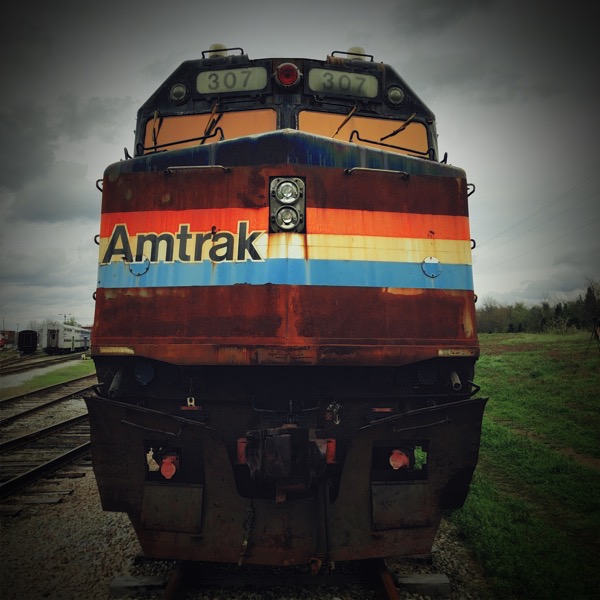
High Mileage
Spencer, NC / Mar 2018 / RWH
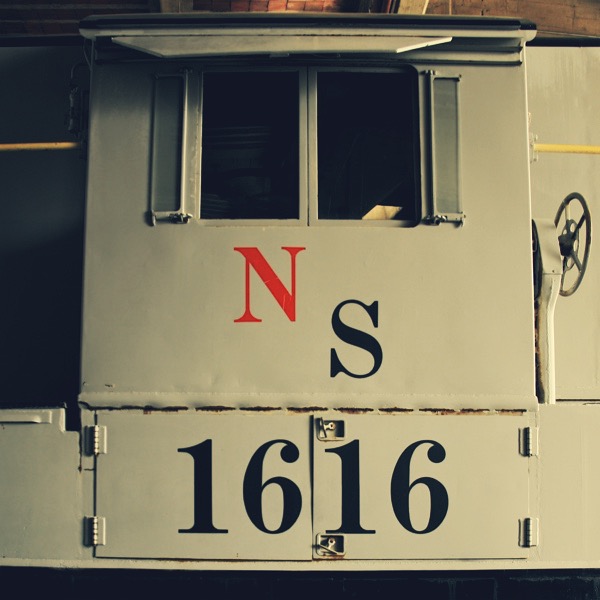
The Original
Spencer, NC / Mar 2018 / RWH
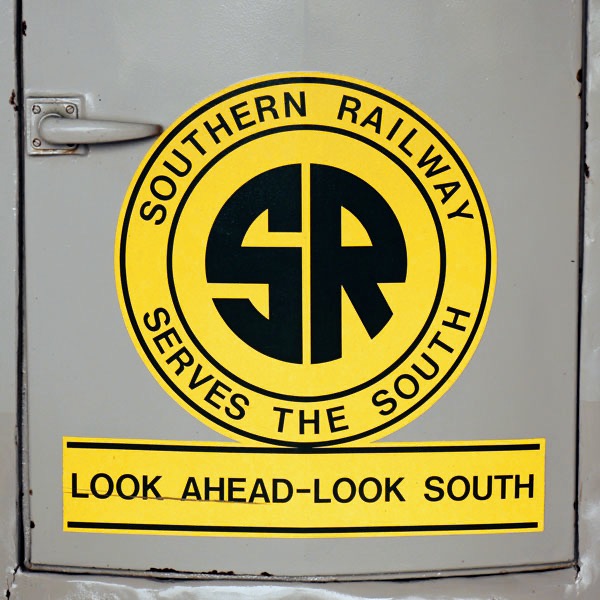
Look Ahead - Look South
Spencer, NC / Mar 2018 / RWH
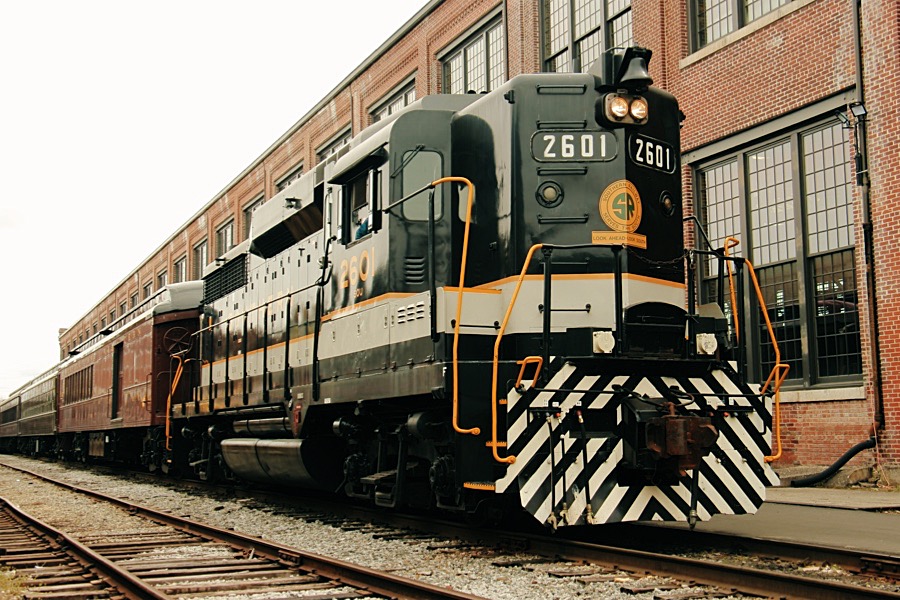
She's All Business
Spencer, NC / Mar 2018 / RWH

Prospects
Spencer, NC / Mar 2018 / RWH
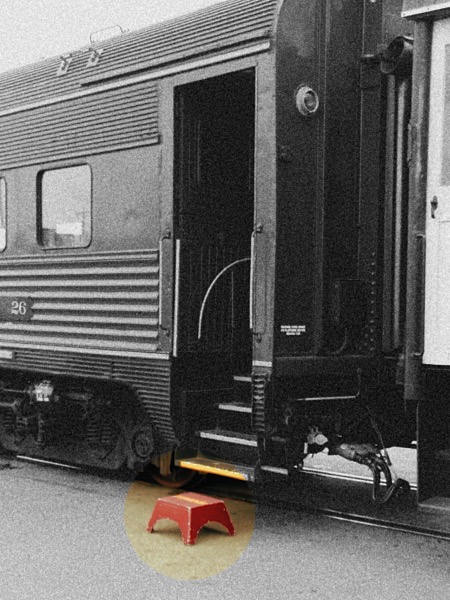
Southern Hospitality
Spencer, NC / Mar 2018 / RWH

Progressive Railroading
Spencer, NC / Mar 2018 / RWH
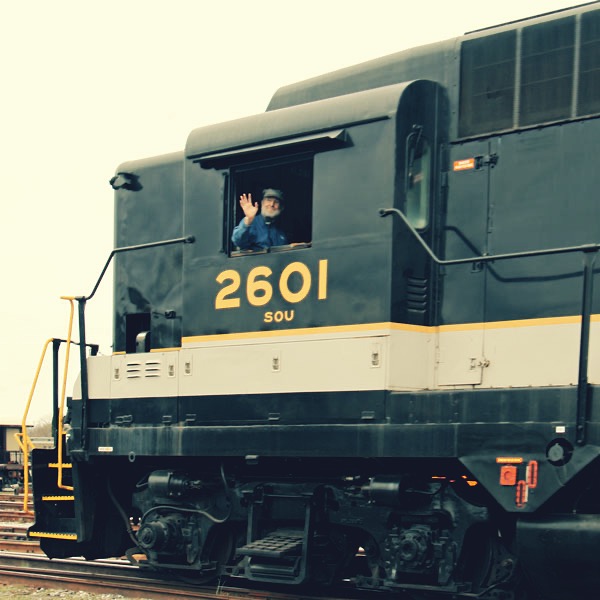
The Southern Way
Spencer, NC / Mar 2018 / RWH
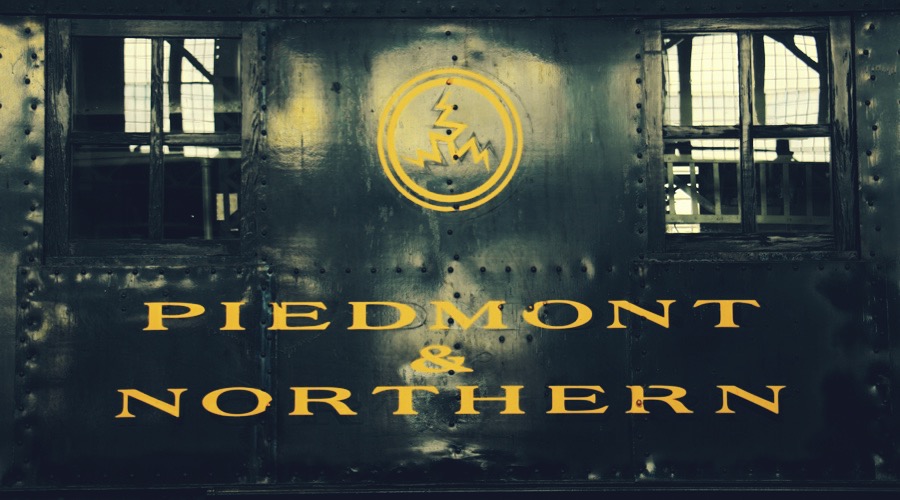
Electrified
Spencer, NC / Mar 2018 / RWH
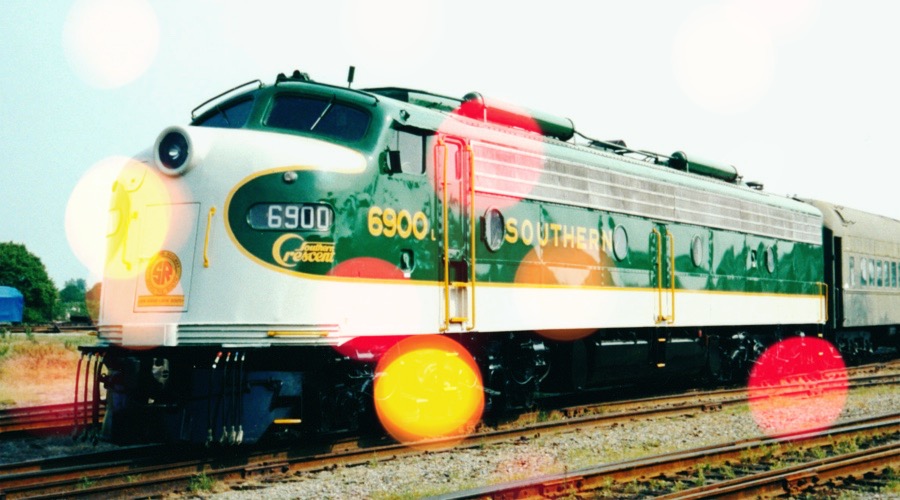
Movie Star Qualities
Spencer, NC / May 2001 / JCH
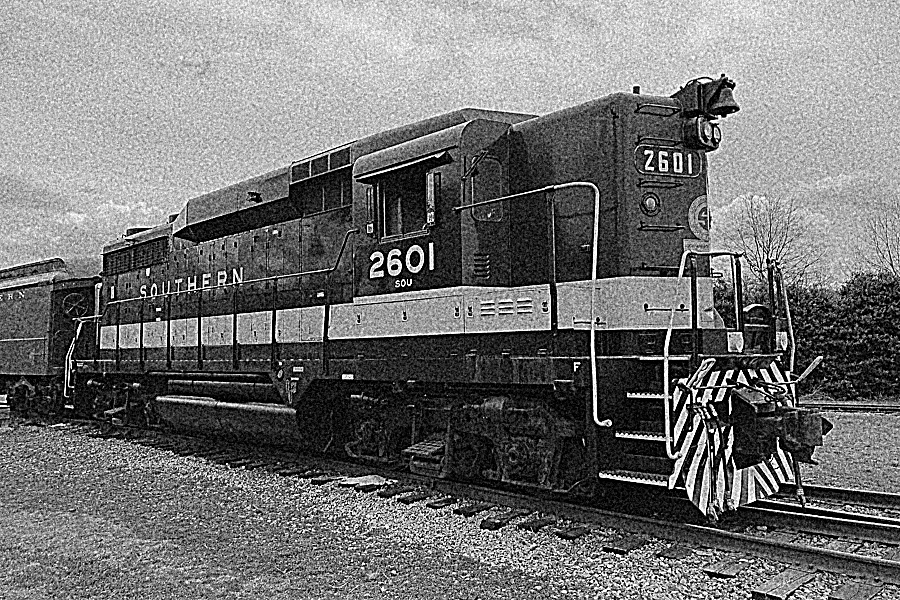
The Second Generation
Spencer, NC / Mar 2018 / RWH
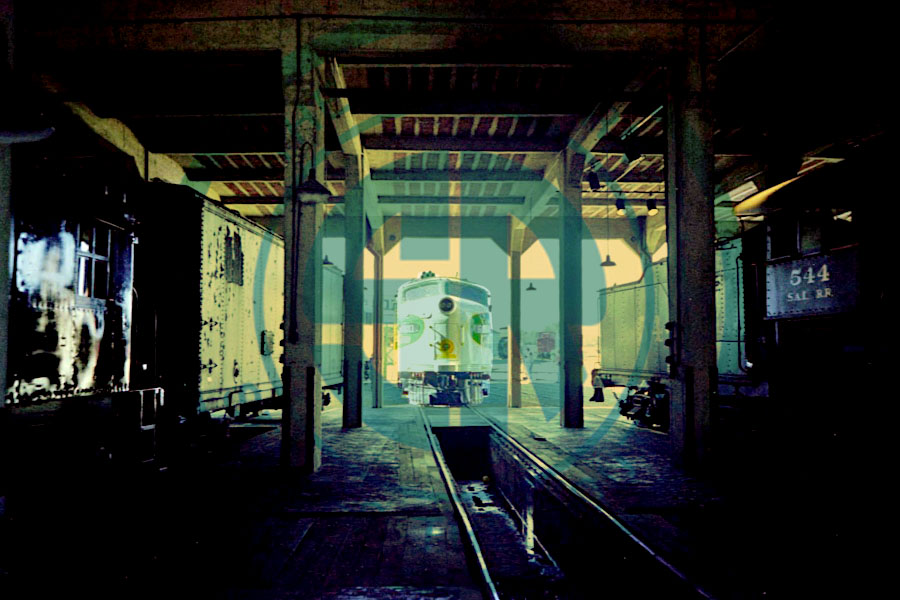
A Southern Stable
Spencer, NC / Oct 2000 / image JCH / artwork RWH

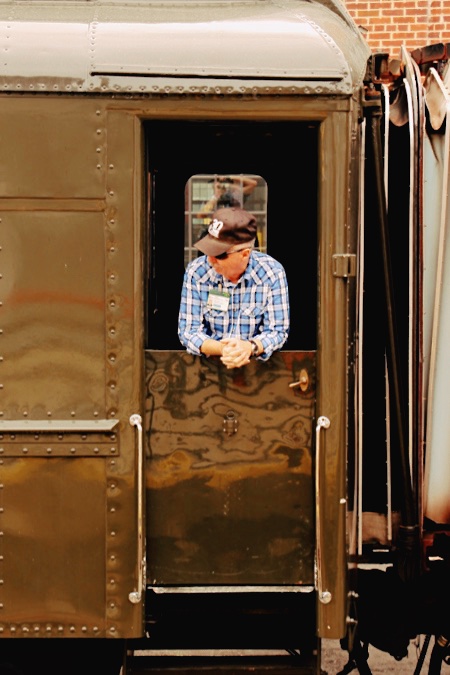
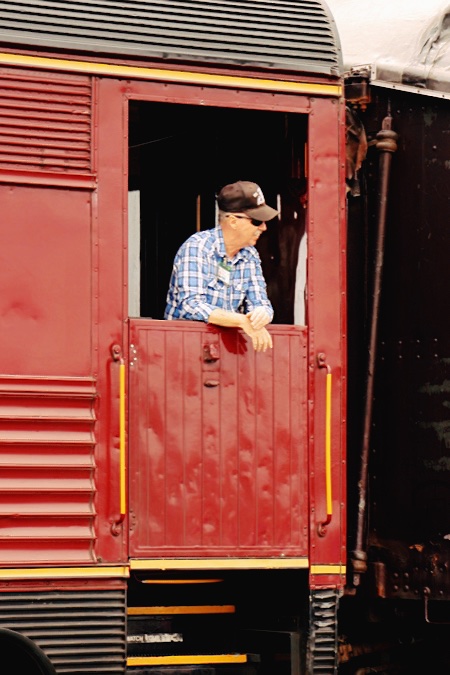
Samuel Spencer Stewards
Spencer, NC / Mar 2018 / RWH

A Siding in Scotland
Apr 2025 / RWH
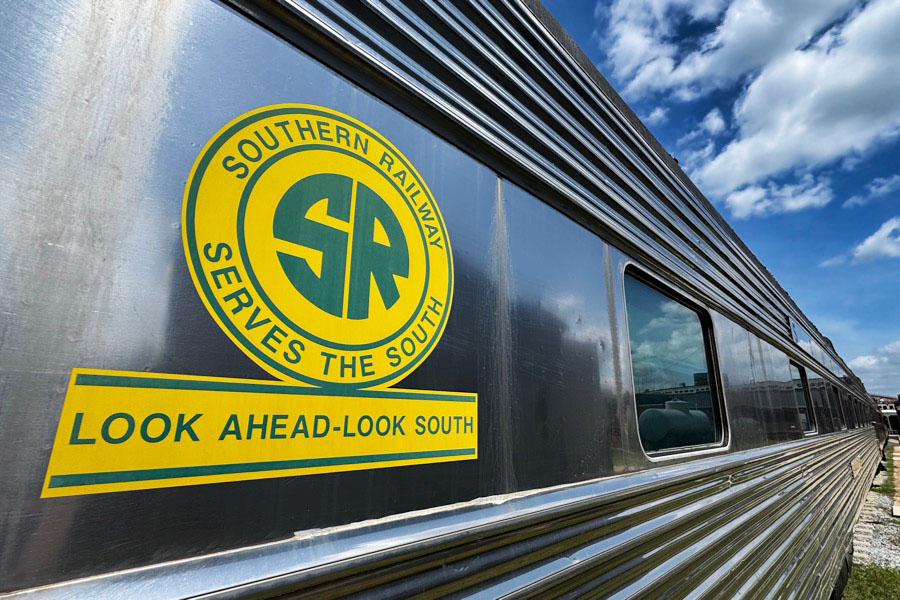
Always Looking Ahead
Spencer, NC / Apr 2025 / RWH
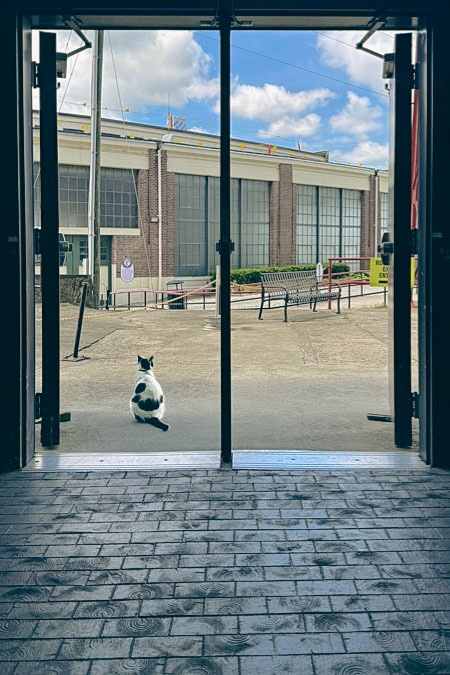
Shop Switcher
Apr 2025 / RWH
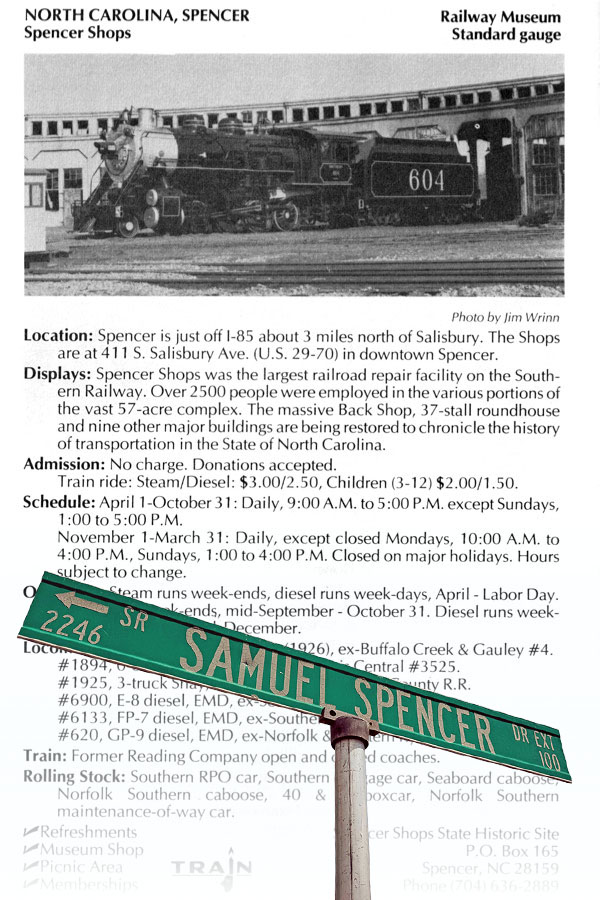
Samuel's Shops
image and artwork RWH
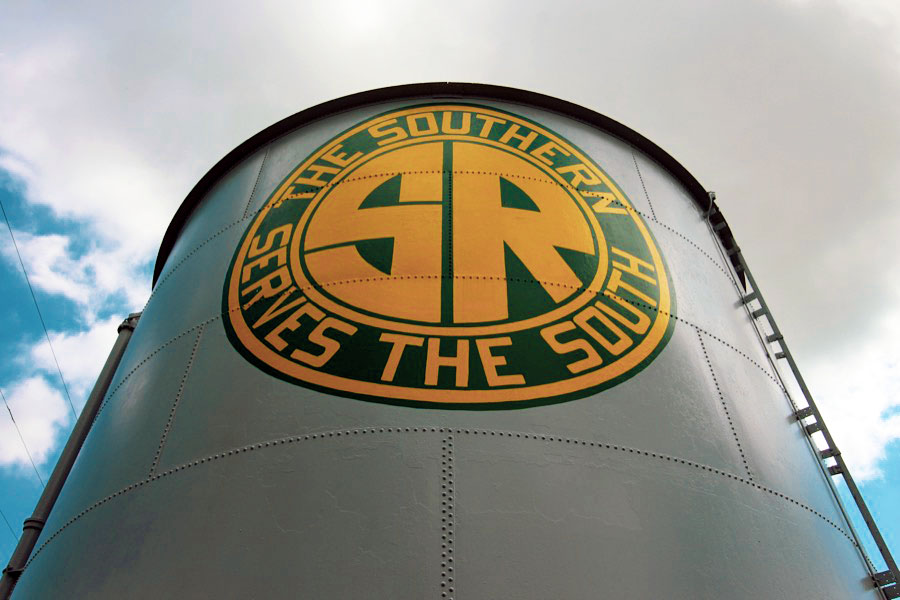
Head in the Clouds
Apr 2025 / RWH
 Snapshots
Snapshots
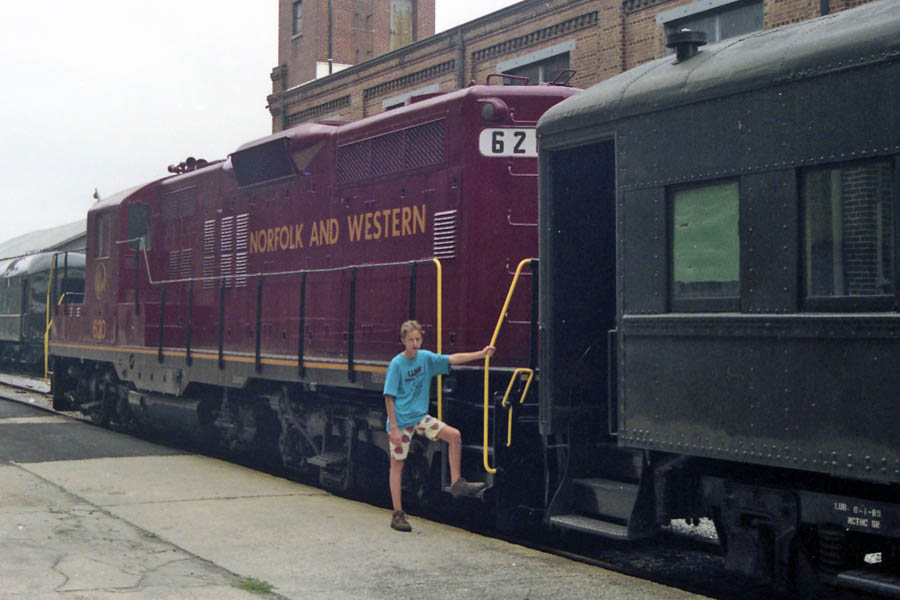
Spencer, NC / Aug 1989 / JCH
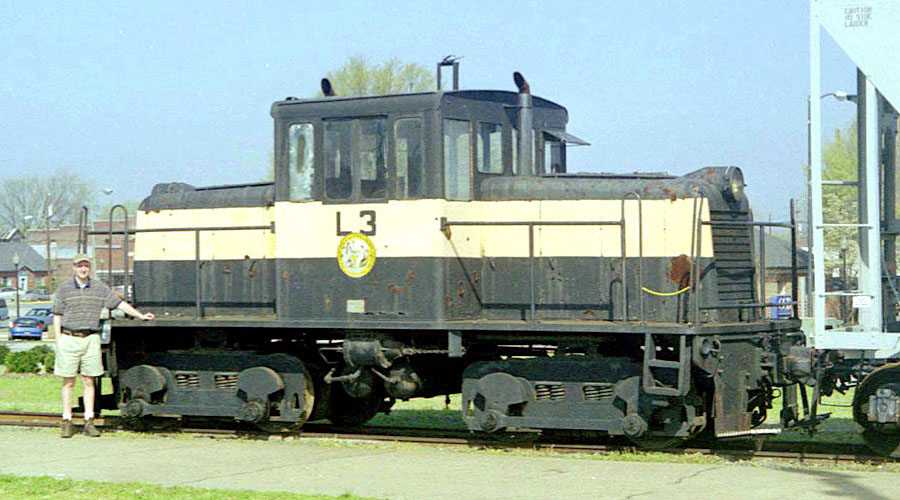
Spencer, NC / Aug 1998 / JCH
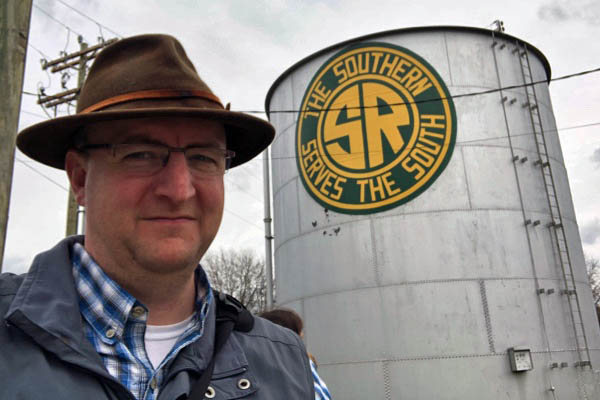
Spencer, NC / Mar 2018 / RWH
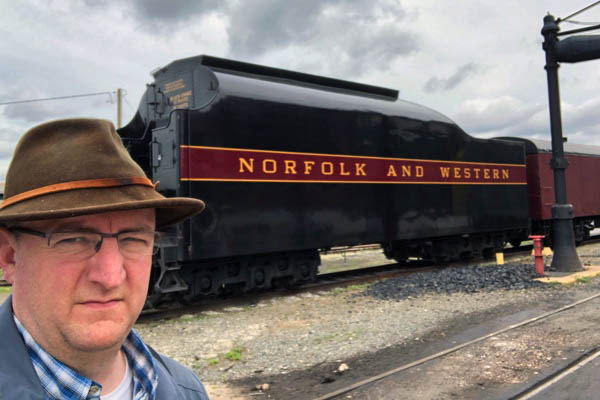
Spencer, NC / Mar 2018 / RWH
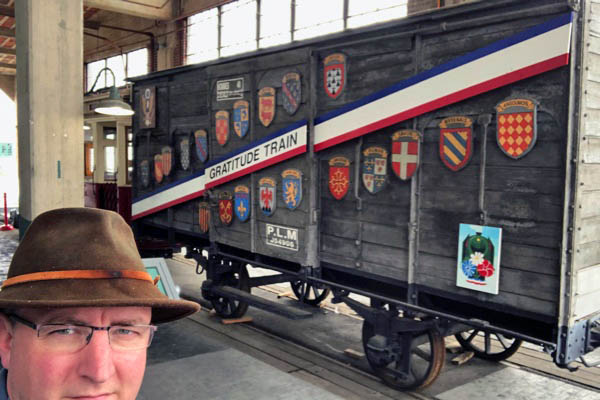
Spencer, NC / Mar 2018 / RWH
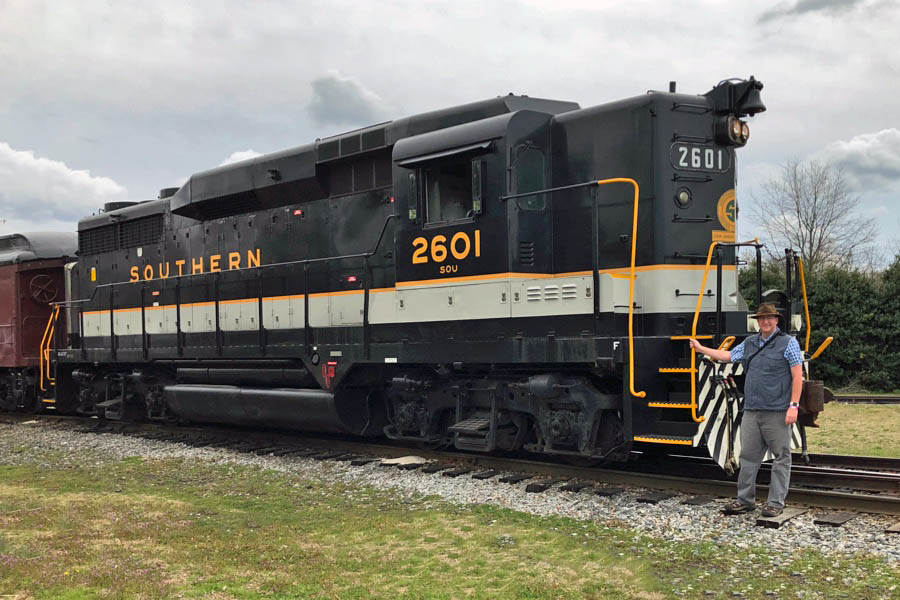
Spencer, NC / Mar 2018 / RWH
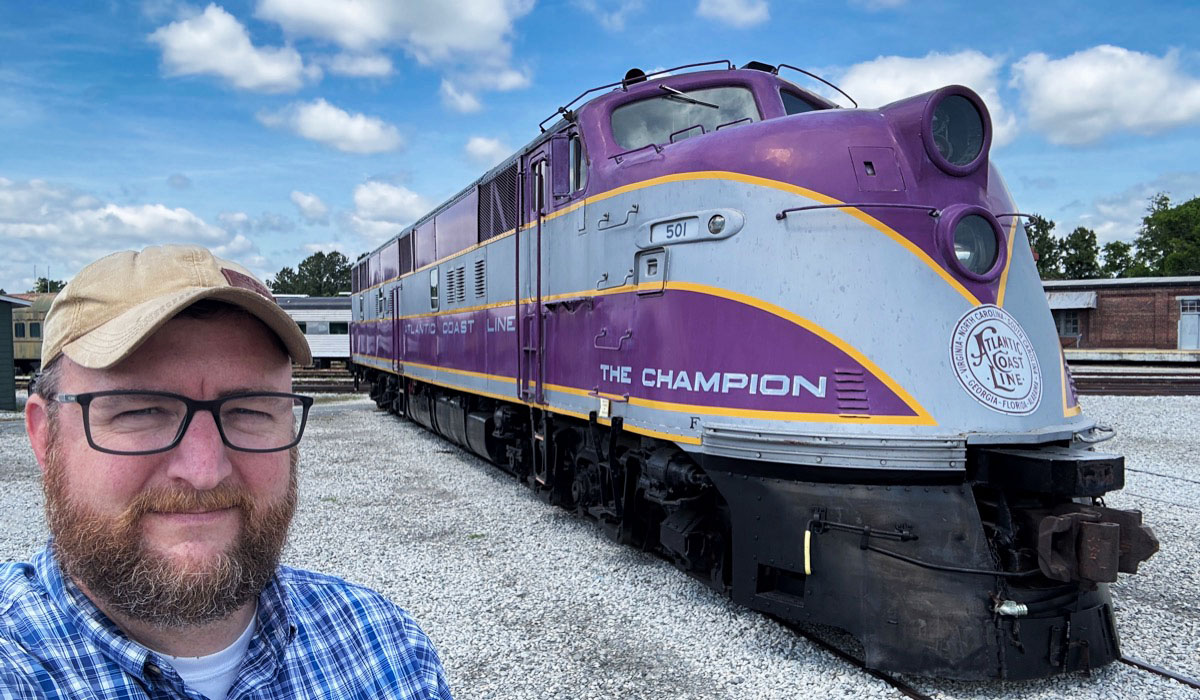
Spencer, NC / Apr 2025 / RWH
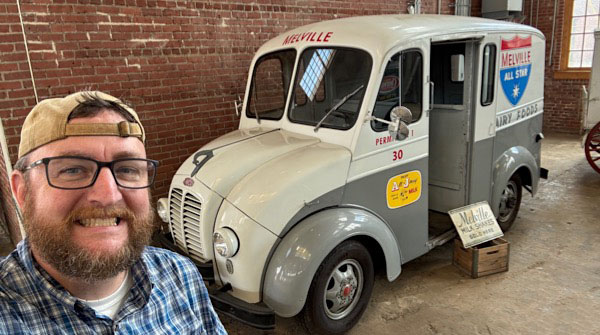
Spencer, NC / Apr 2025 / RWH

Spencer, NC / Apr 2025 / RWH
Links / Sources
- North Carolina Transportation Museum website
- Wikipedia article for North Carolina Transportation Museum
- Railroad Picture Archives North Carolina Transportation Museum roster
- Duane Galloway and Jim Wrinn, Southern Railway's Spencer Shops 1896-1996 (TLC Publishing, 1996)

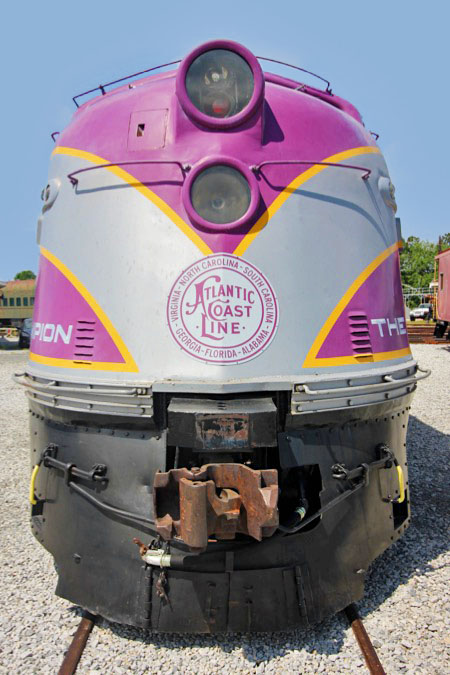

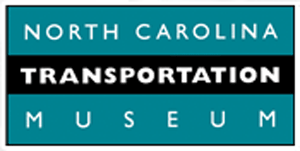


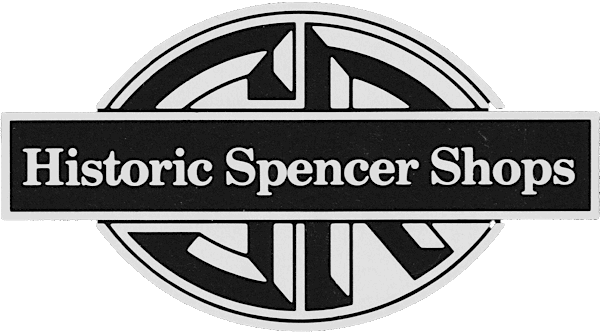
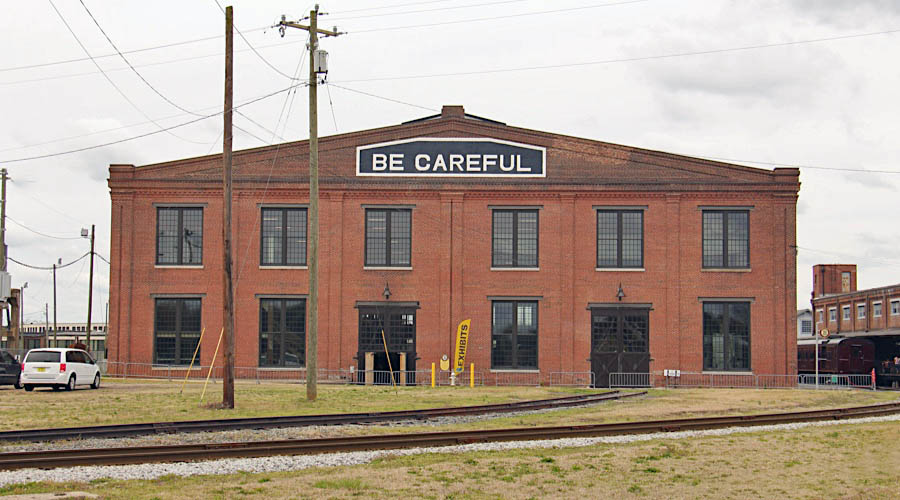 The museum was first known as Spencer Shops, but later the name was changed to the North Carolina Transportation Museum to widen the scope of the collection and exhibits to include airplanes and automobiles with ties to the Carolina region. Today, a relocated depot serves as a visitor center for the museum, while the renovated roundhouse and massive back shop building house the indoor collections and displays. Several stalls in the roundhouse are reserved for locomotive overhaul and rolling stock restoration. The railroad collection includes many steam, diesel, and rolling stock examples, as well as a handful of streetcars, electrics, and private gilded passenger cars. The museum operates passenger trains that traverse the length of the grounds throughout the day over an out-and-back route. Numerous special events occur annually, and the museum often hosts visiting motive power (such as
The museum was first known as Spencer Shops, but later the name was changed to the North Carolina Transportation Museum to widen the scope of the collection and exhibits to include airplanes and automobiles with ties to the Carolina region. Today, a relocated depot serves as a visitor center for the museum, while the renovated roundhouse and massive back shop building house the indoor collections and displays. Several stalls in the roundhouse are reserved for locomotive overhaul and rolling stock restoration. The railroad collection includes many steam, diesel, and rolling stock examples, as well as a handful of streetcars, electrics, and private gilded passenger cars. The museum operates passenger trains that traverse the length of the grounds throughout the day over an out-and-back route. Numerous special events occur annually, and the museum often hosts visiting motive power (such as 